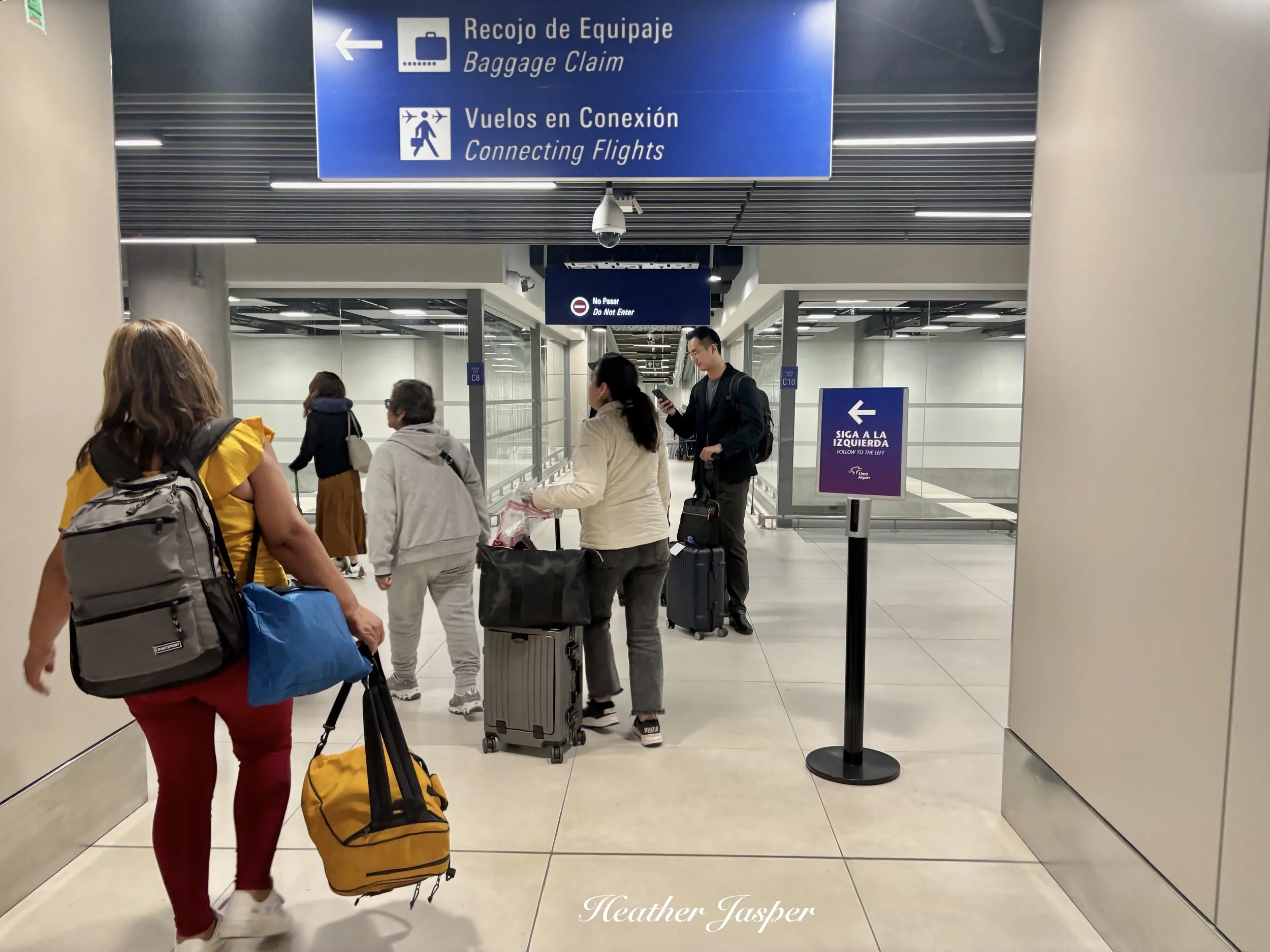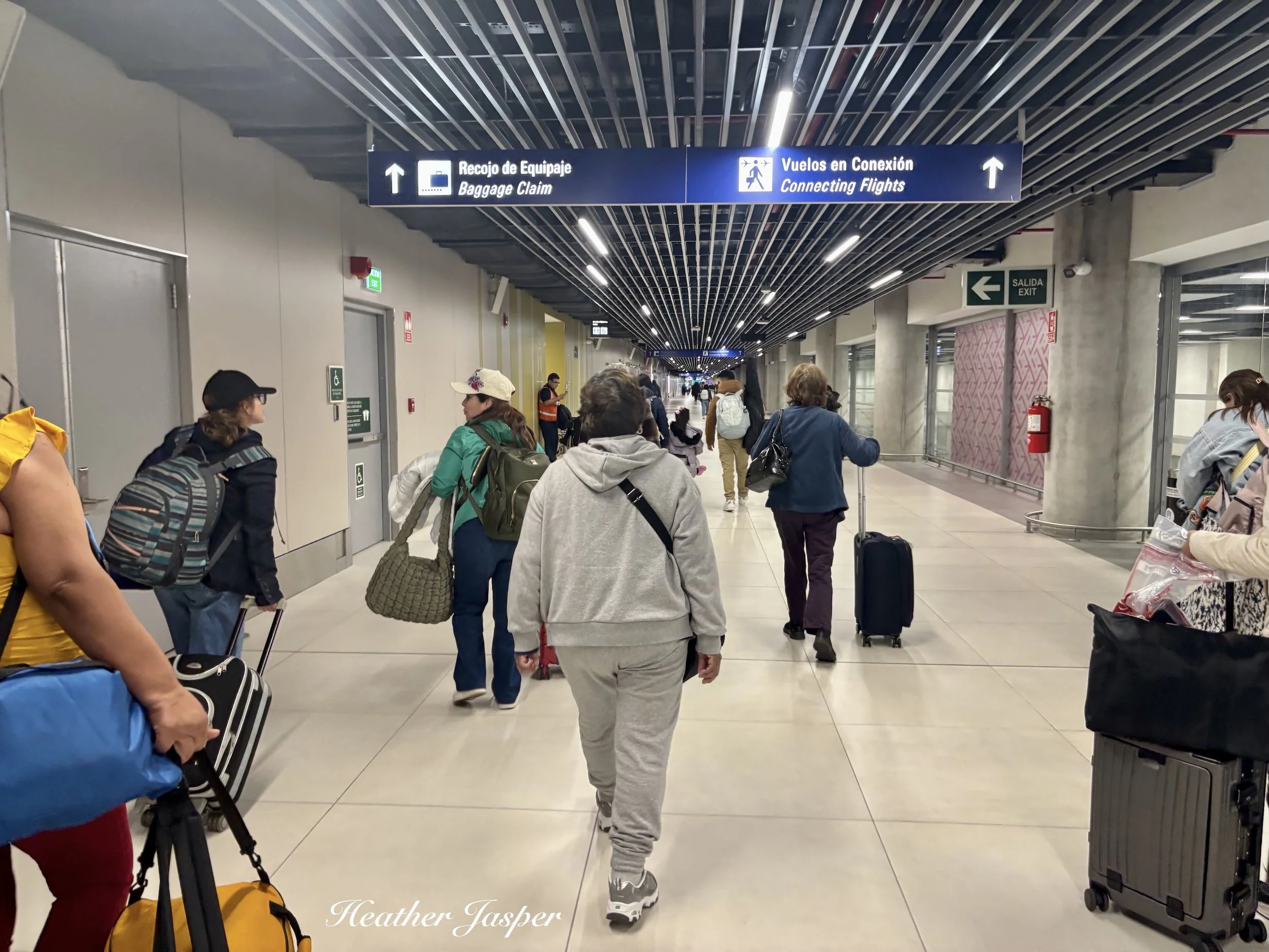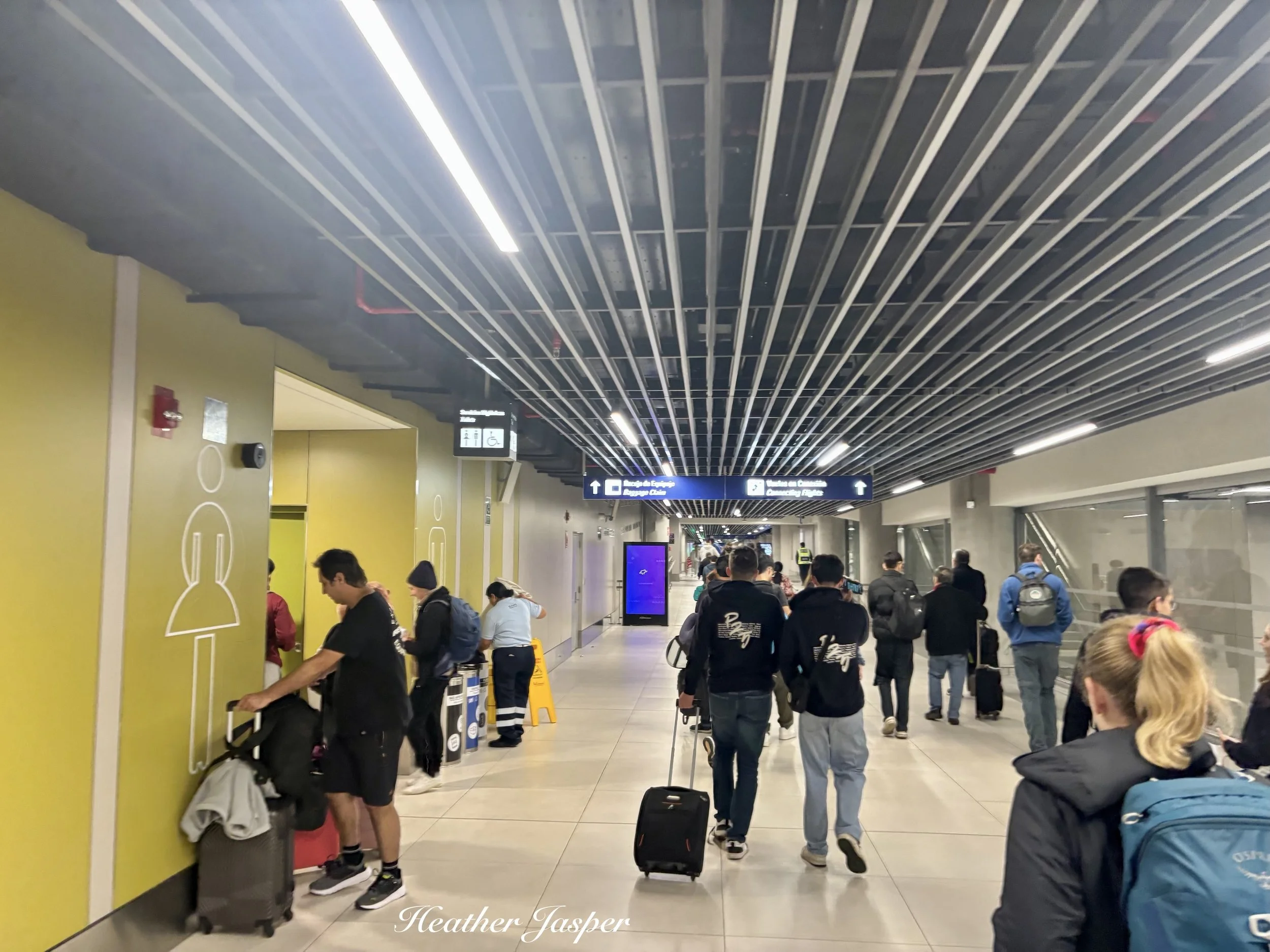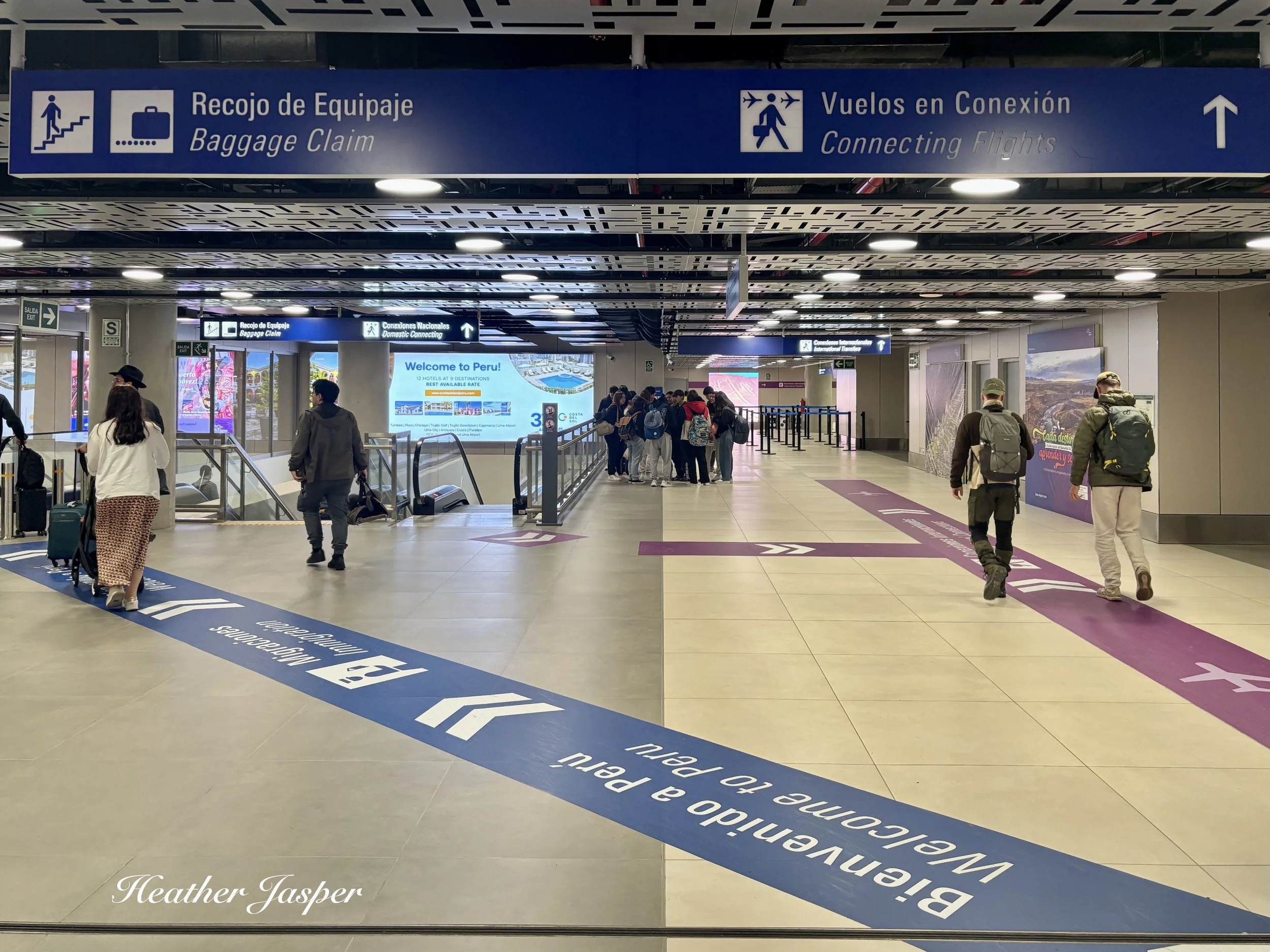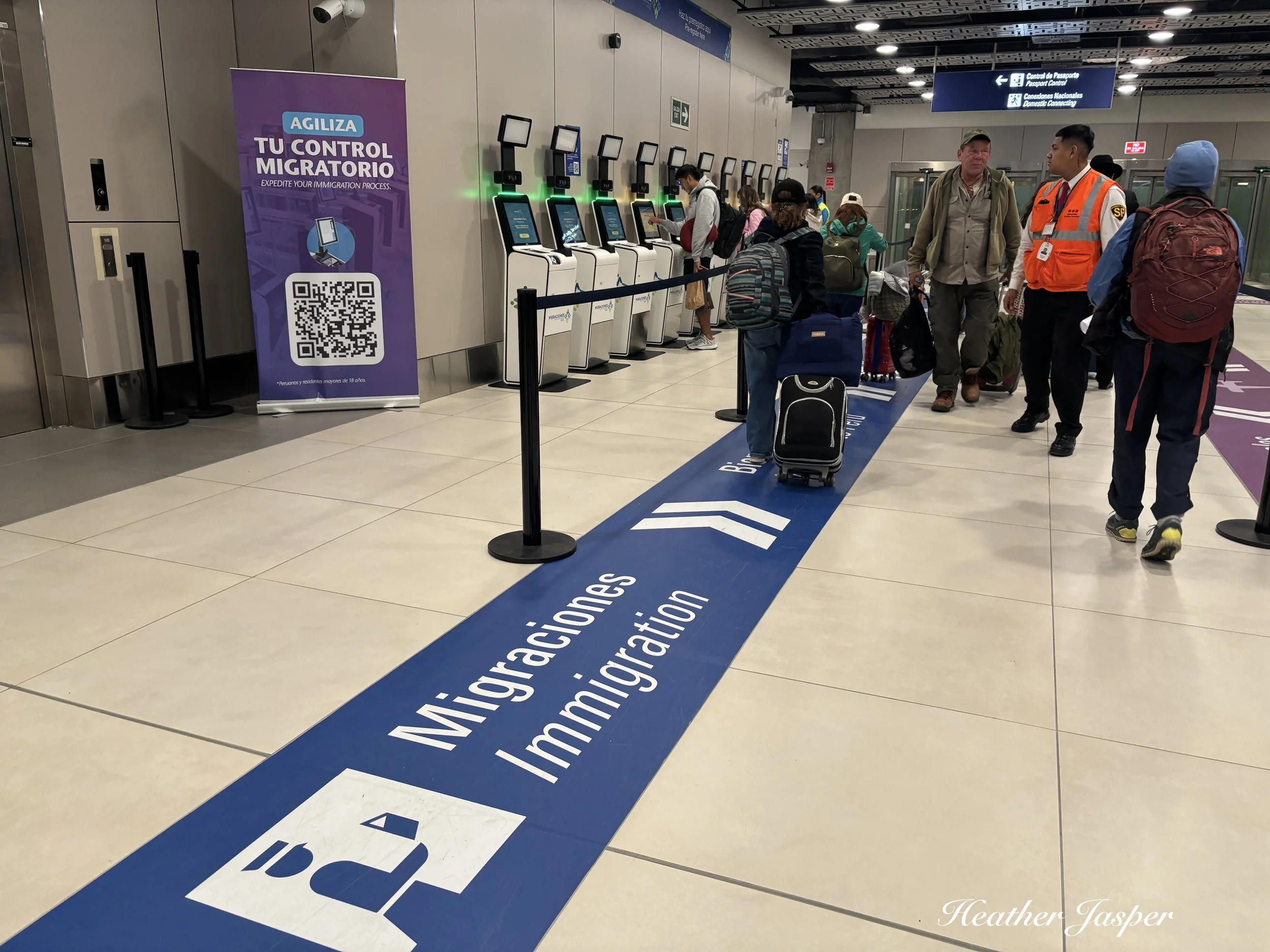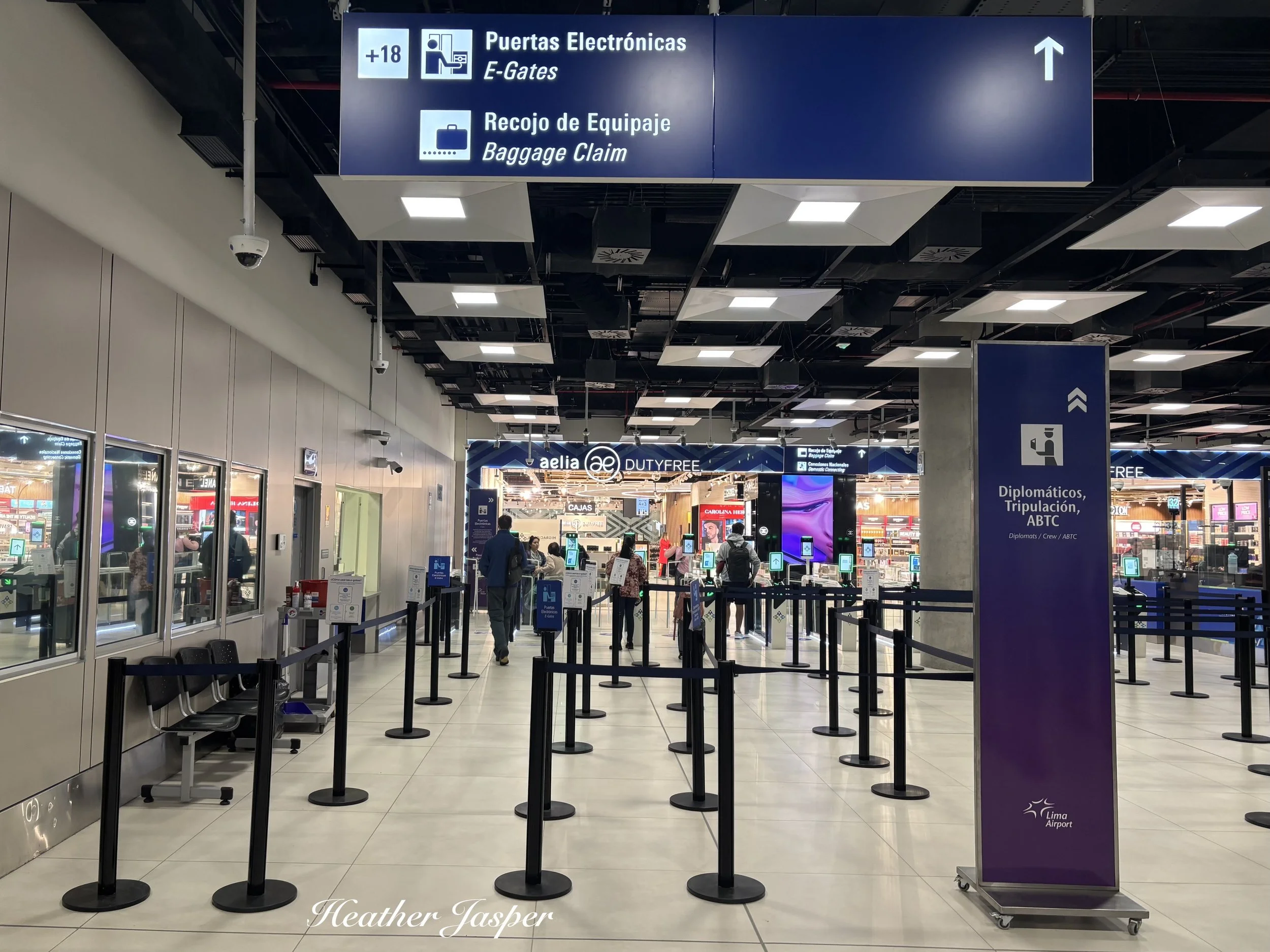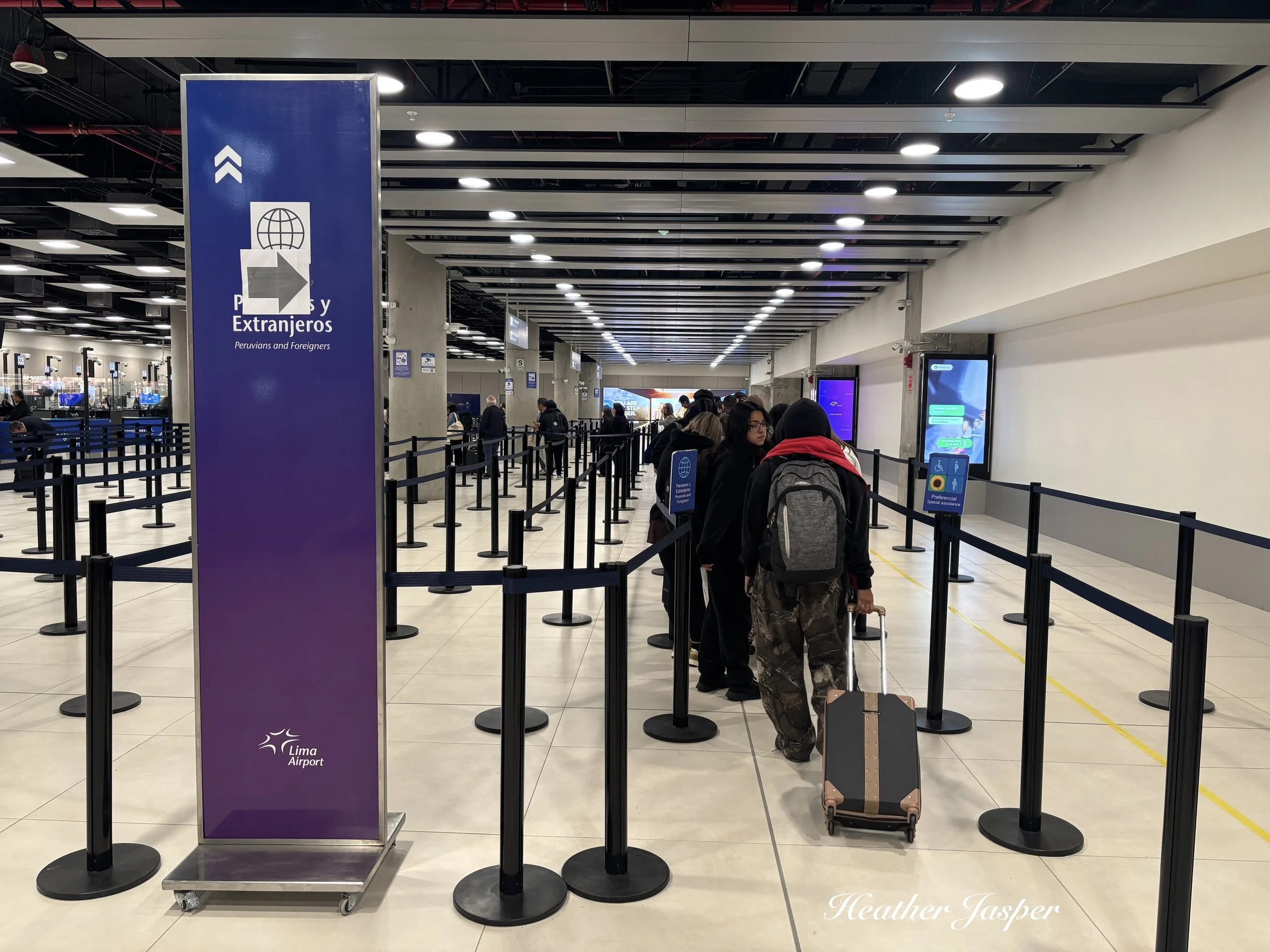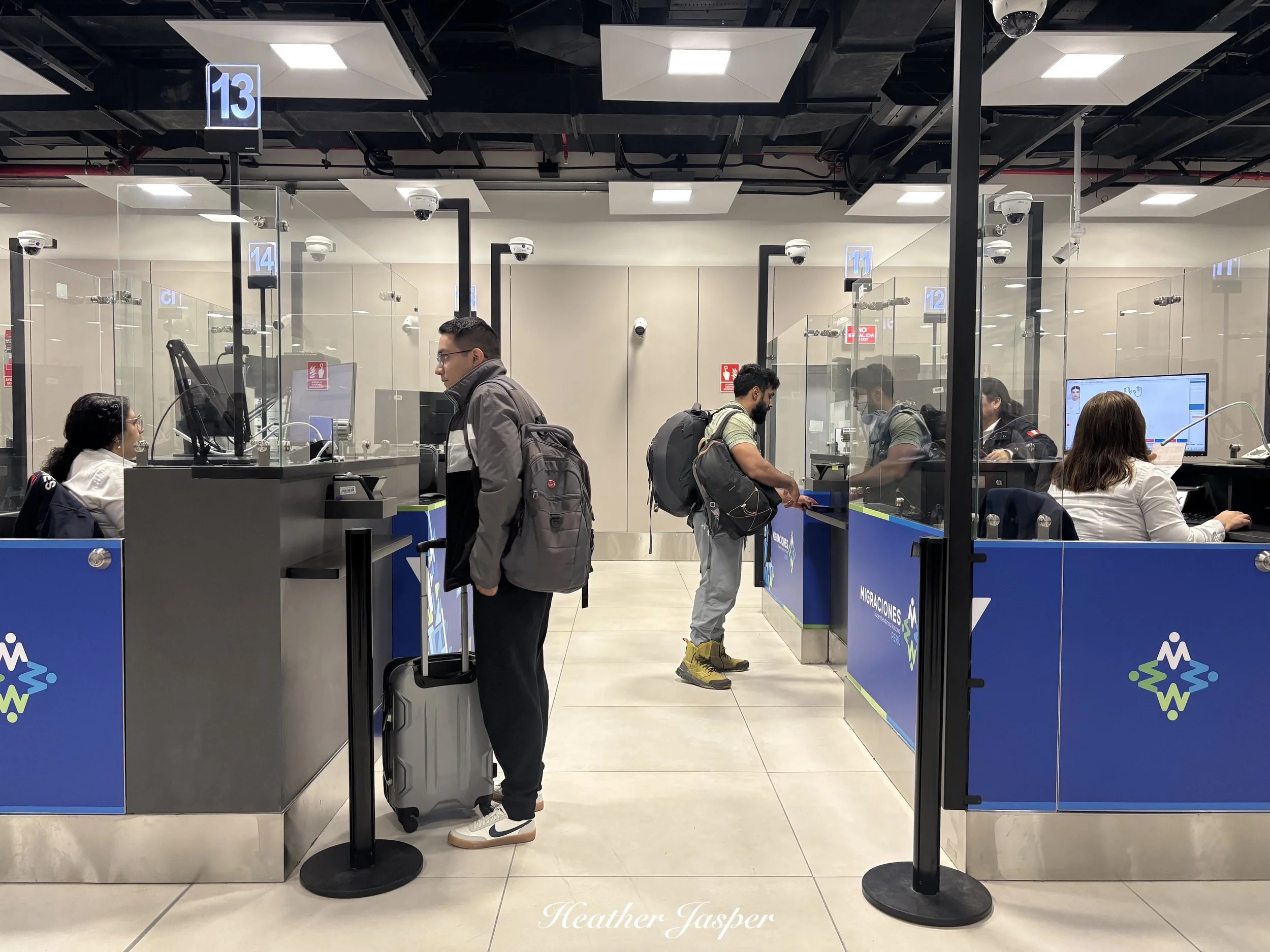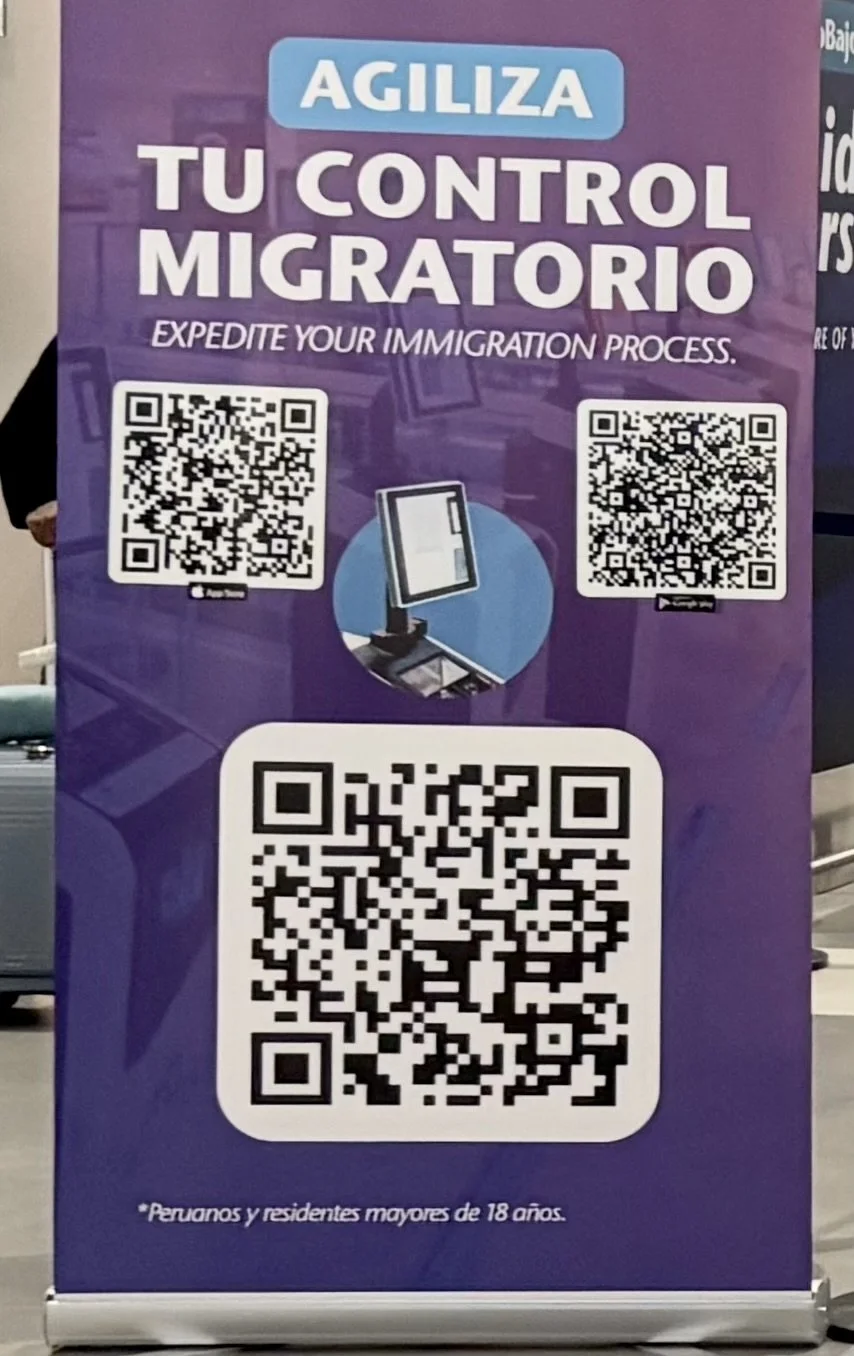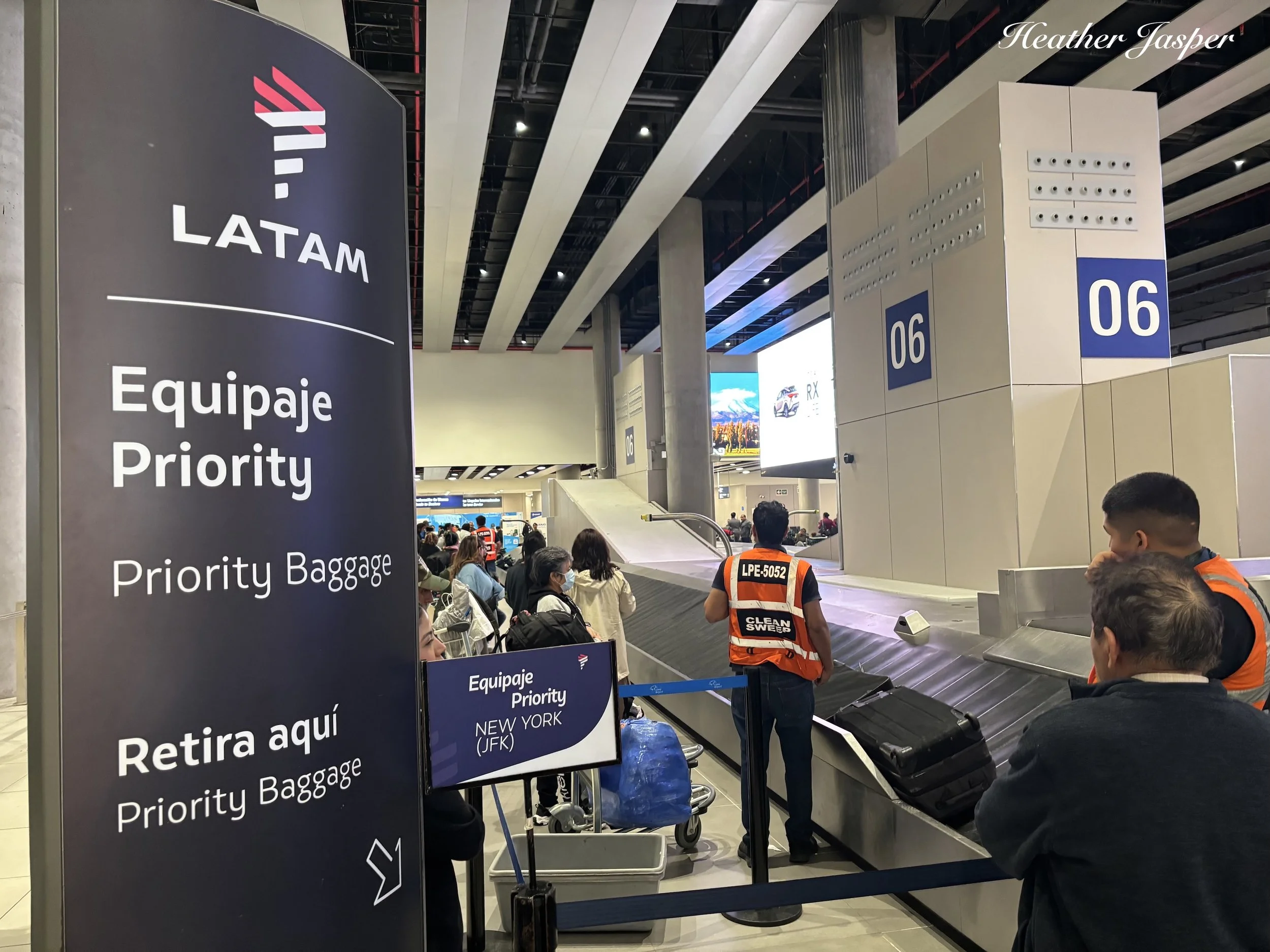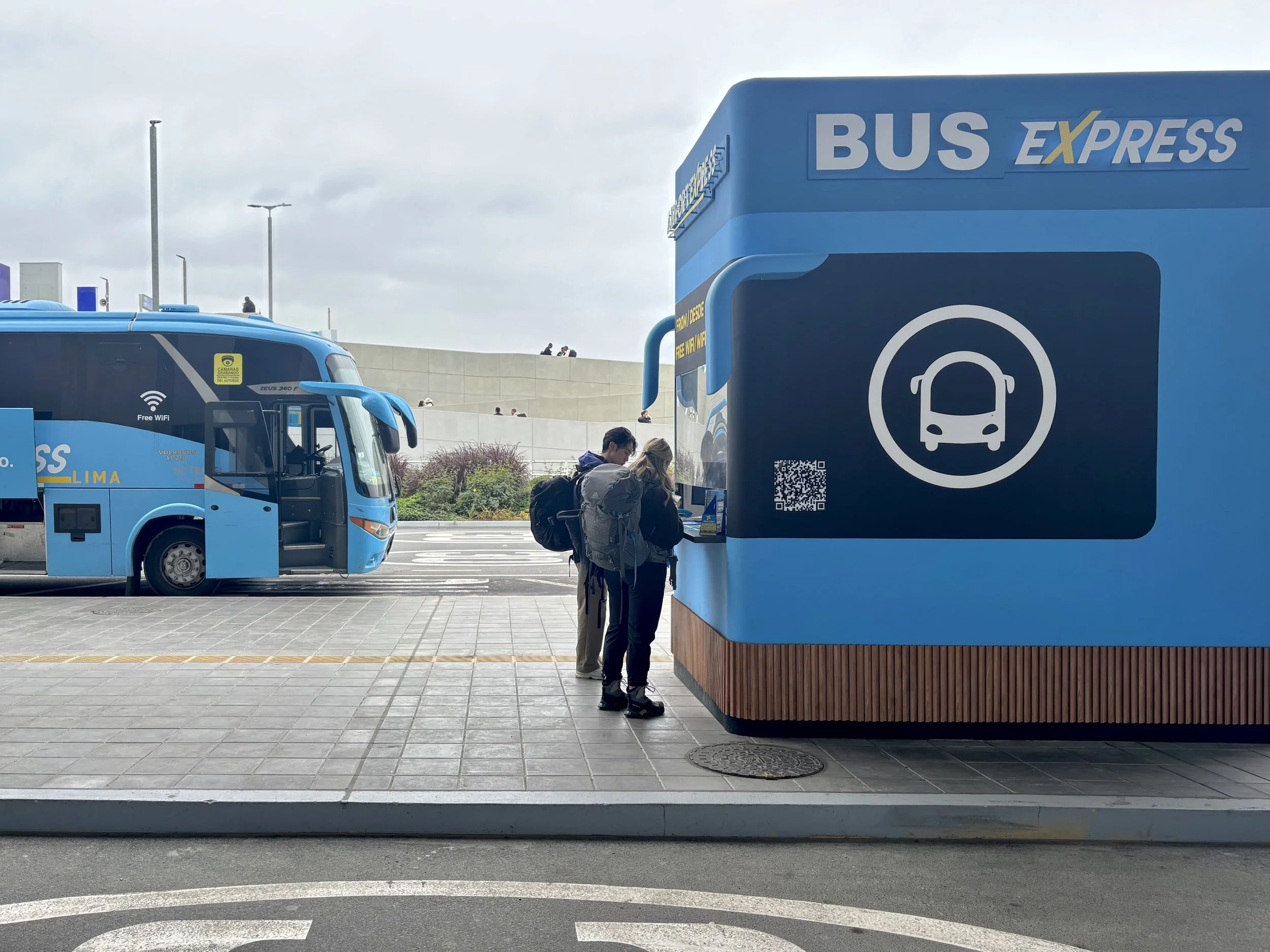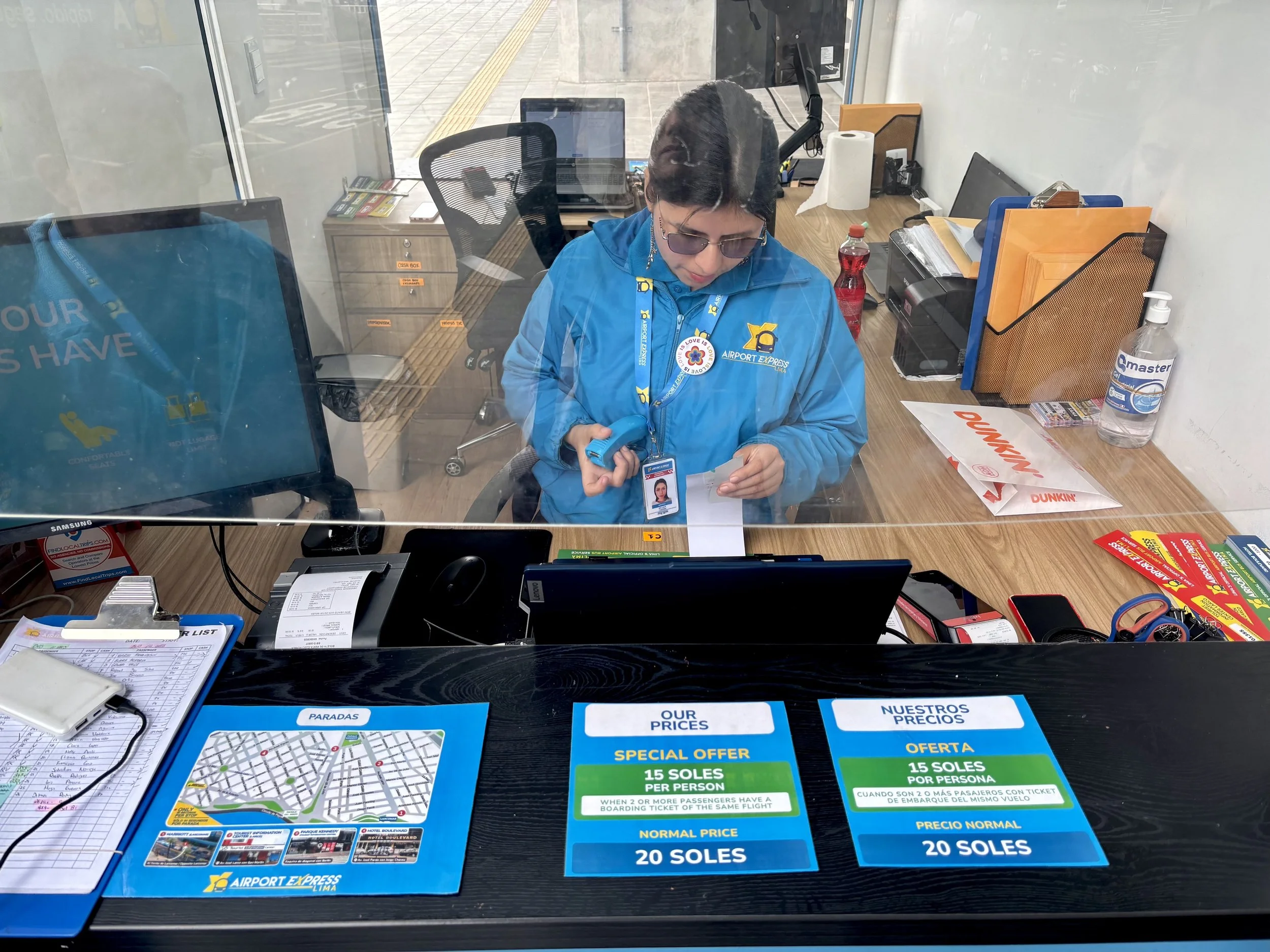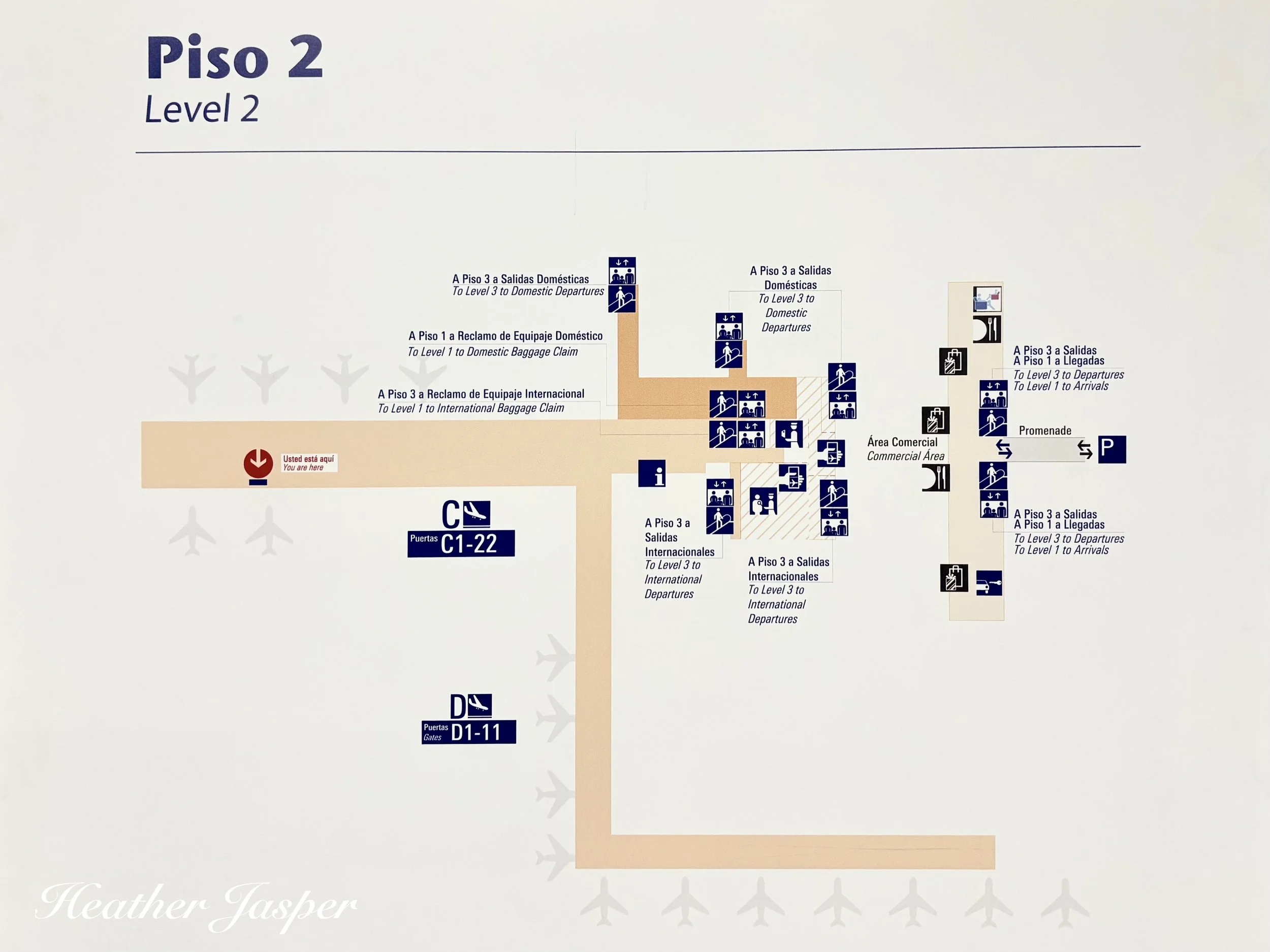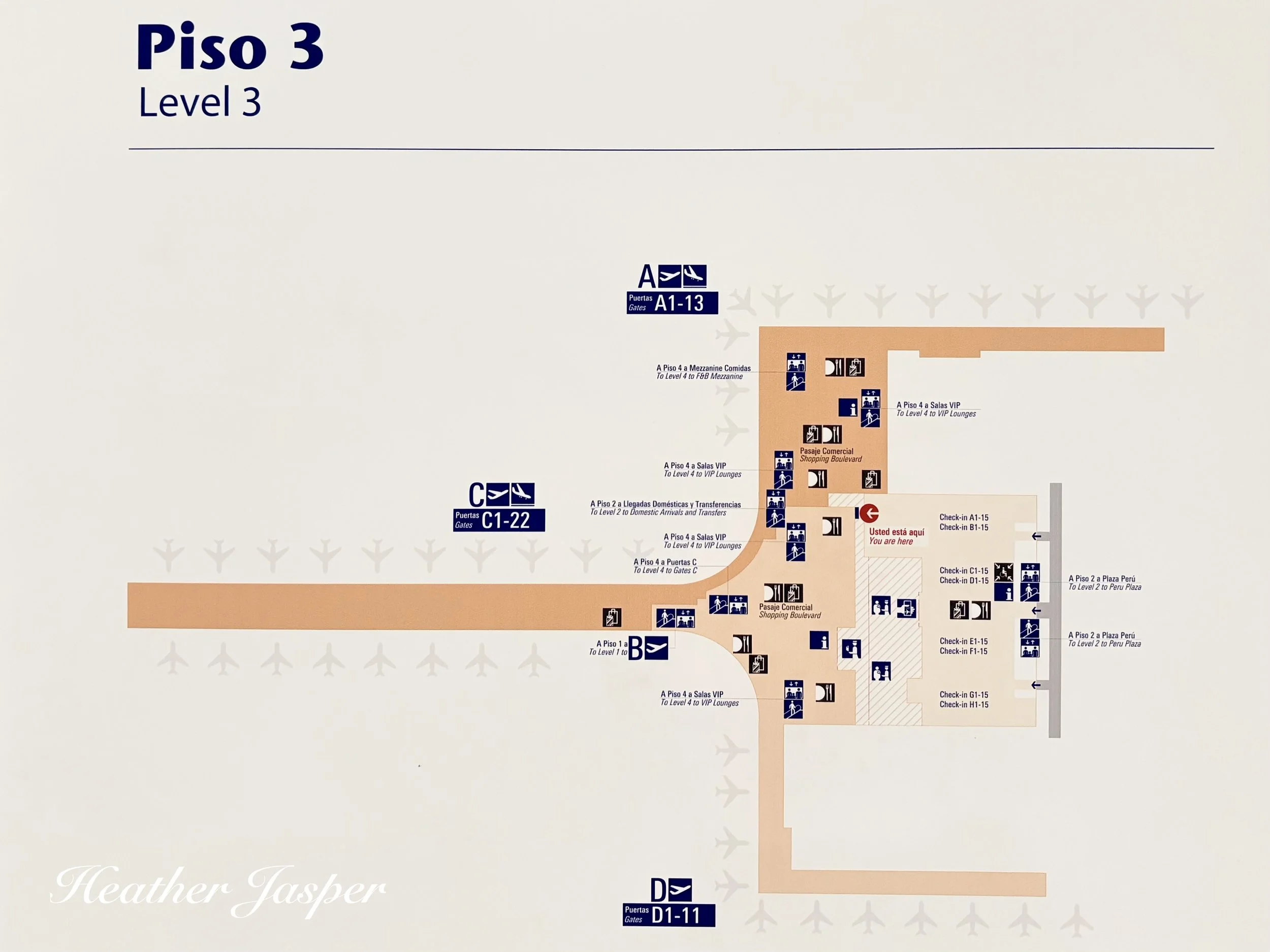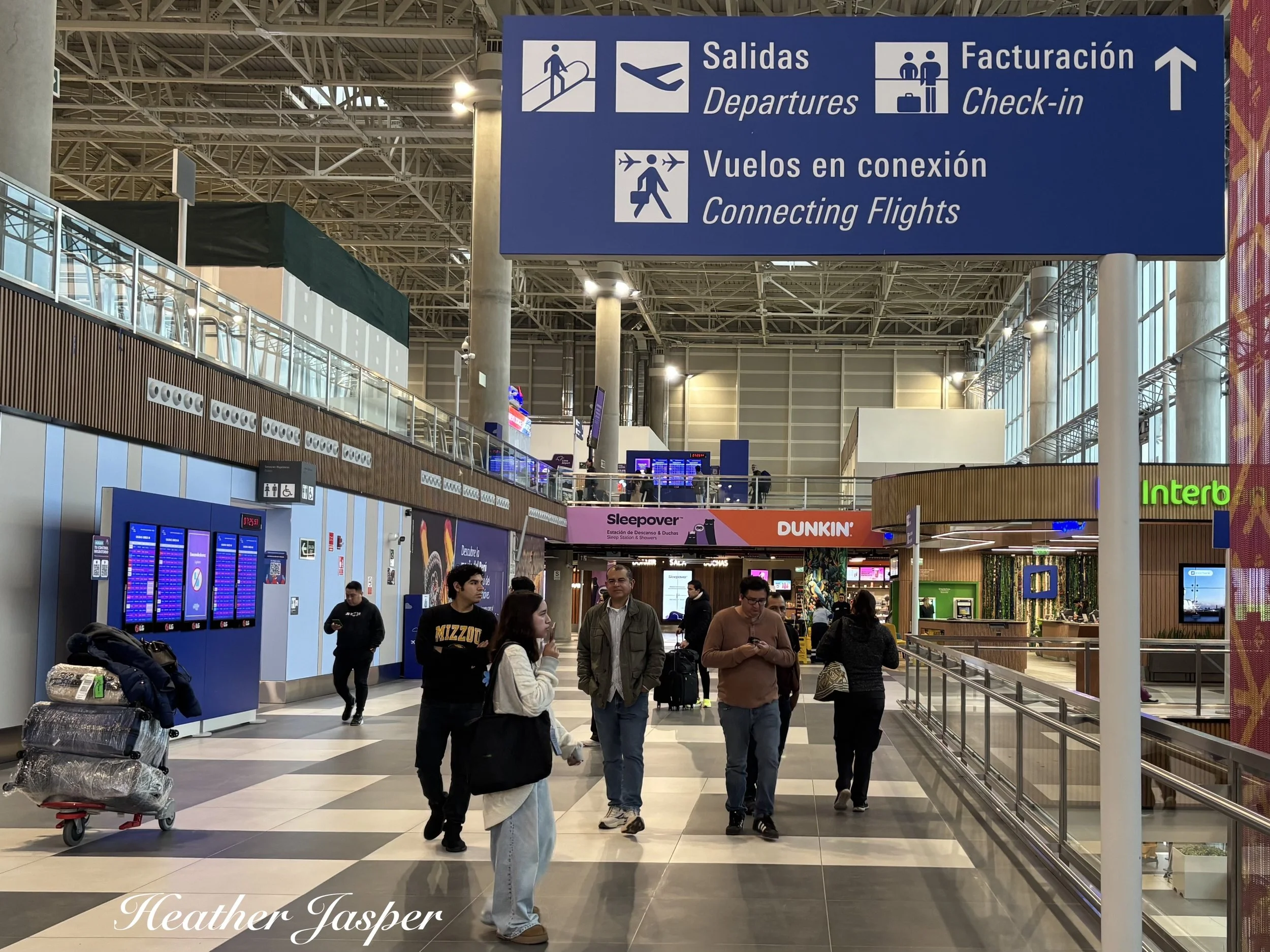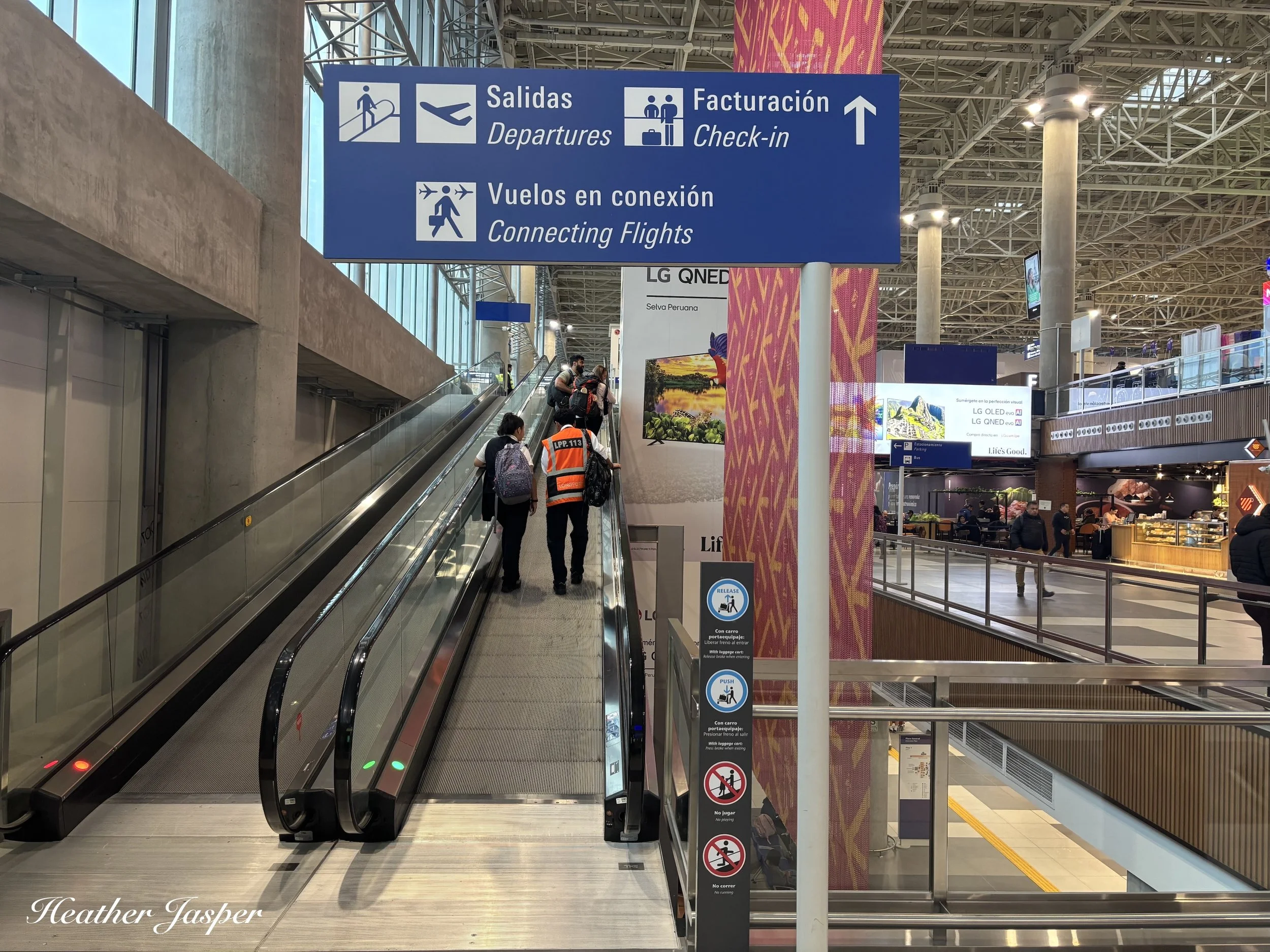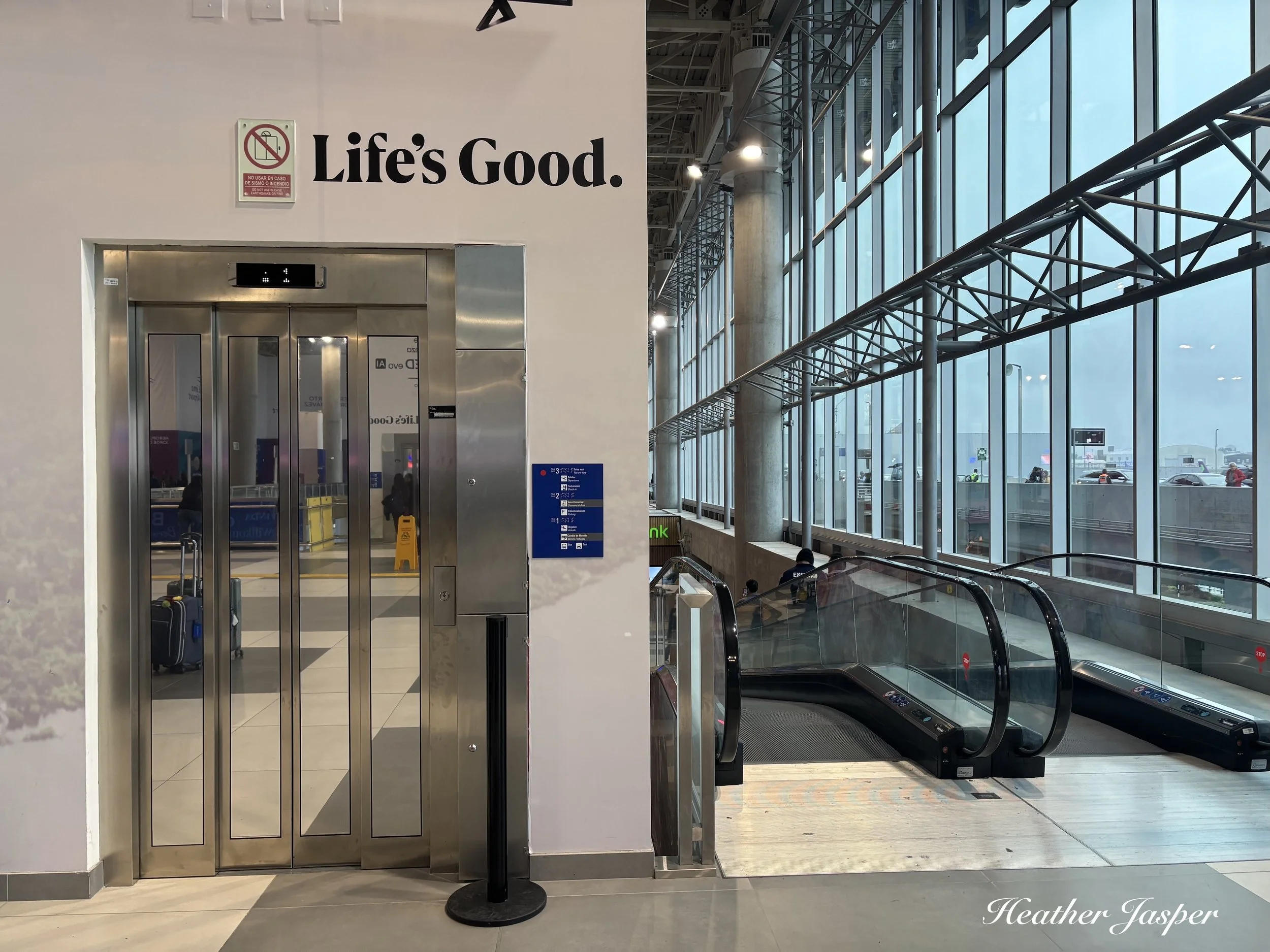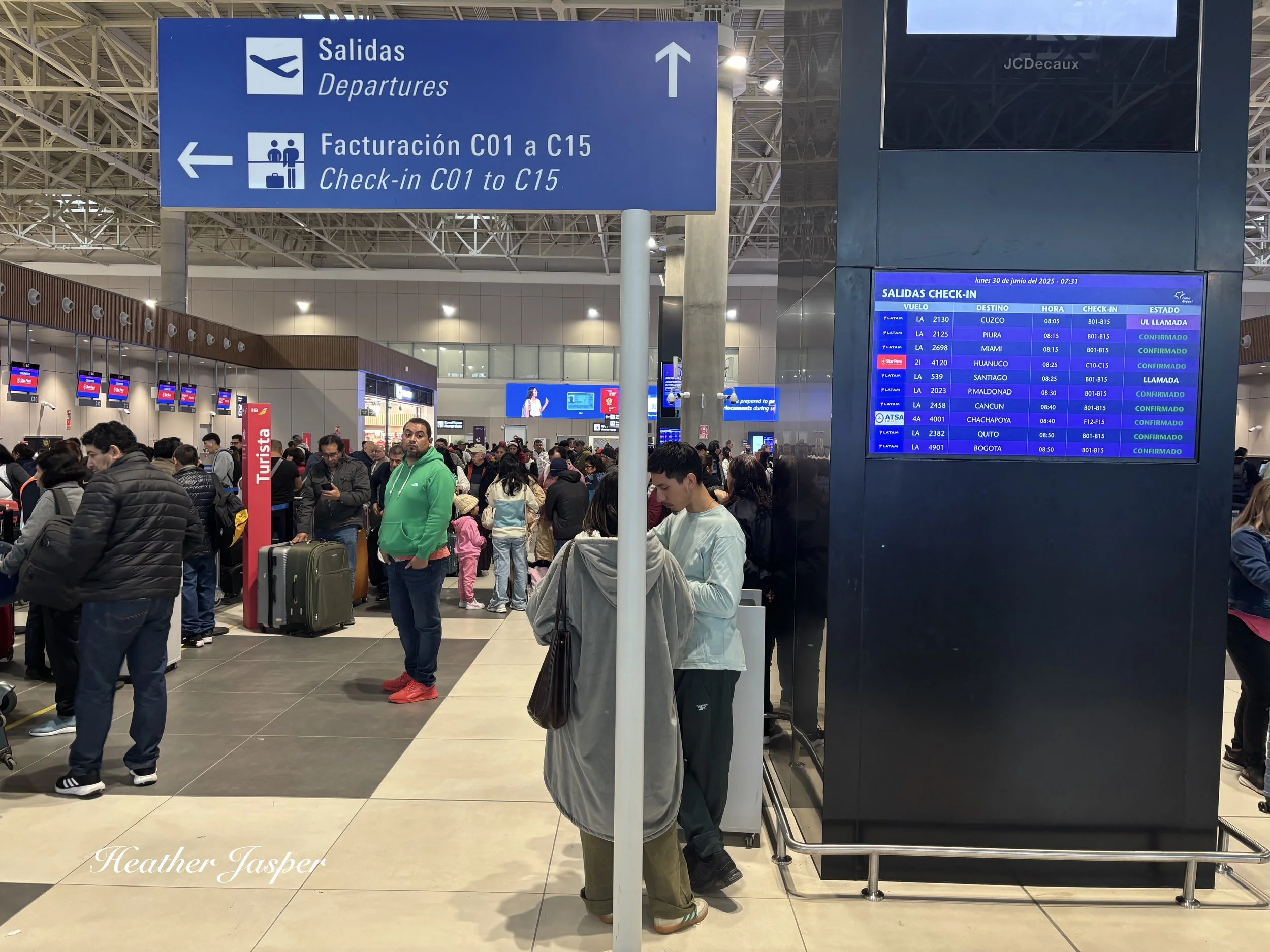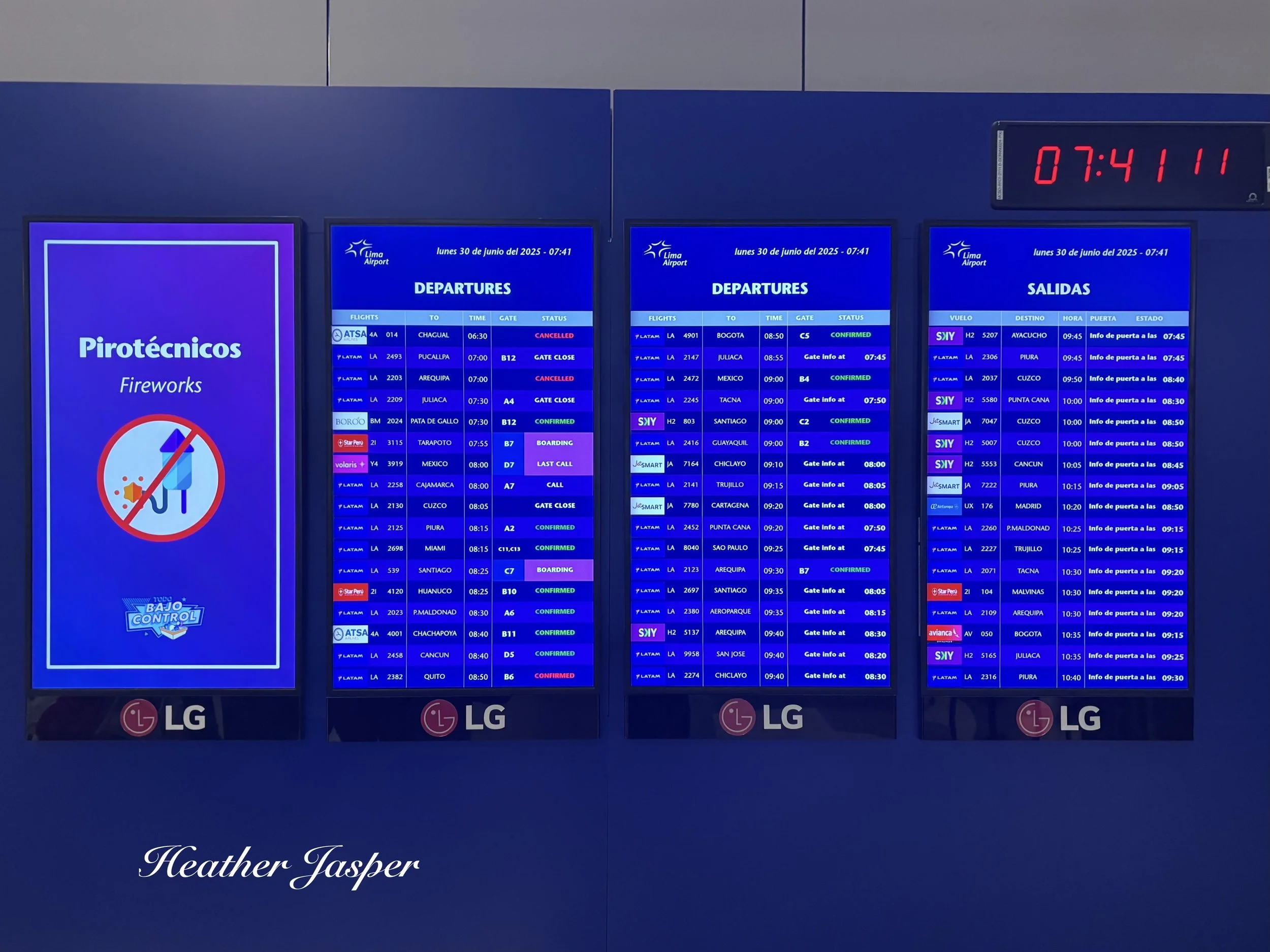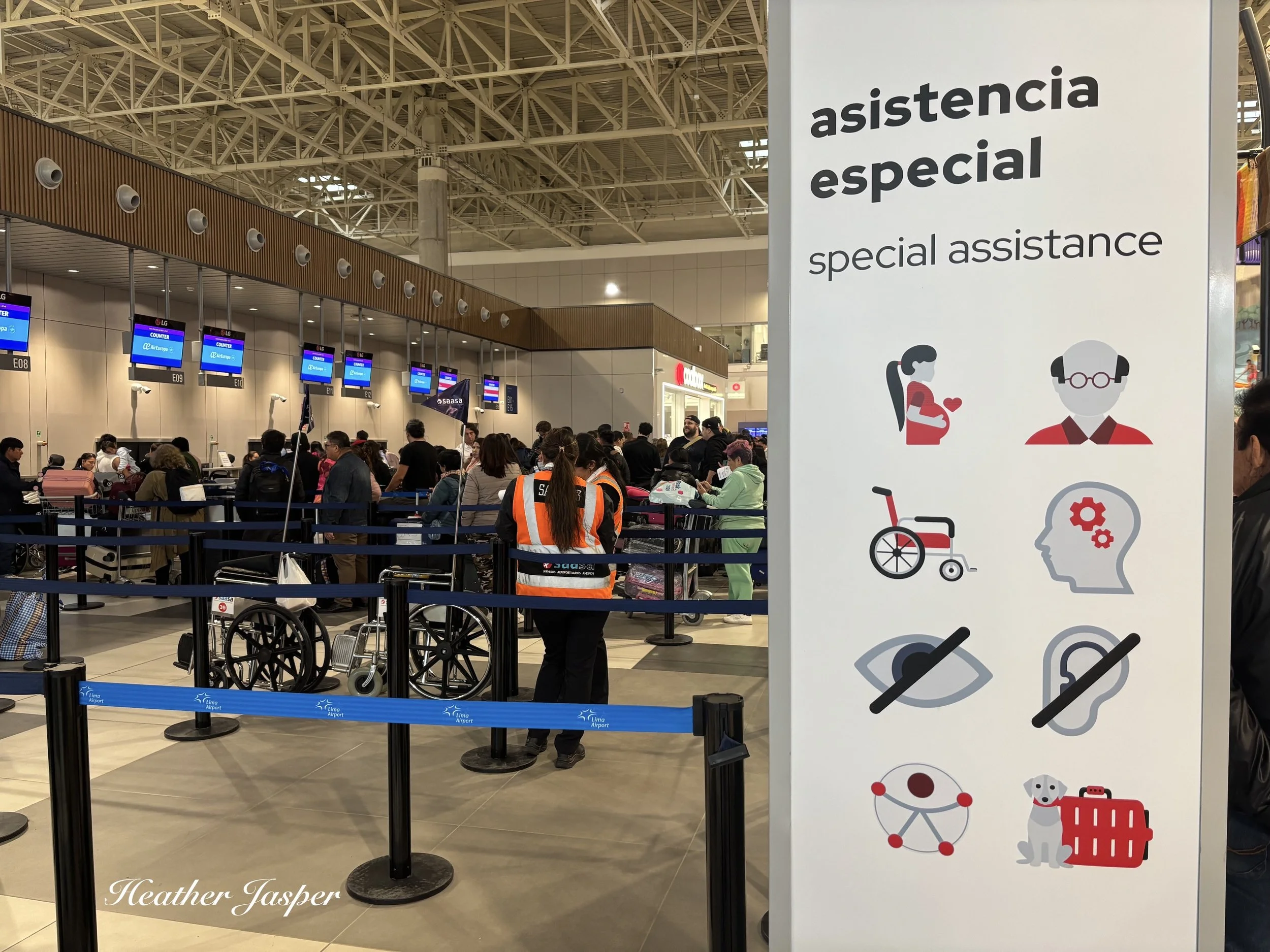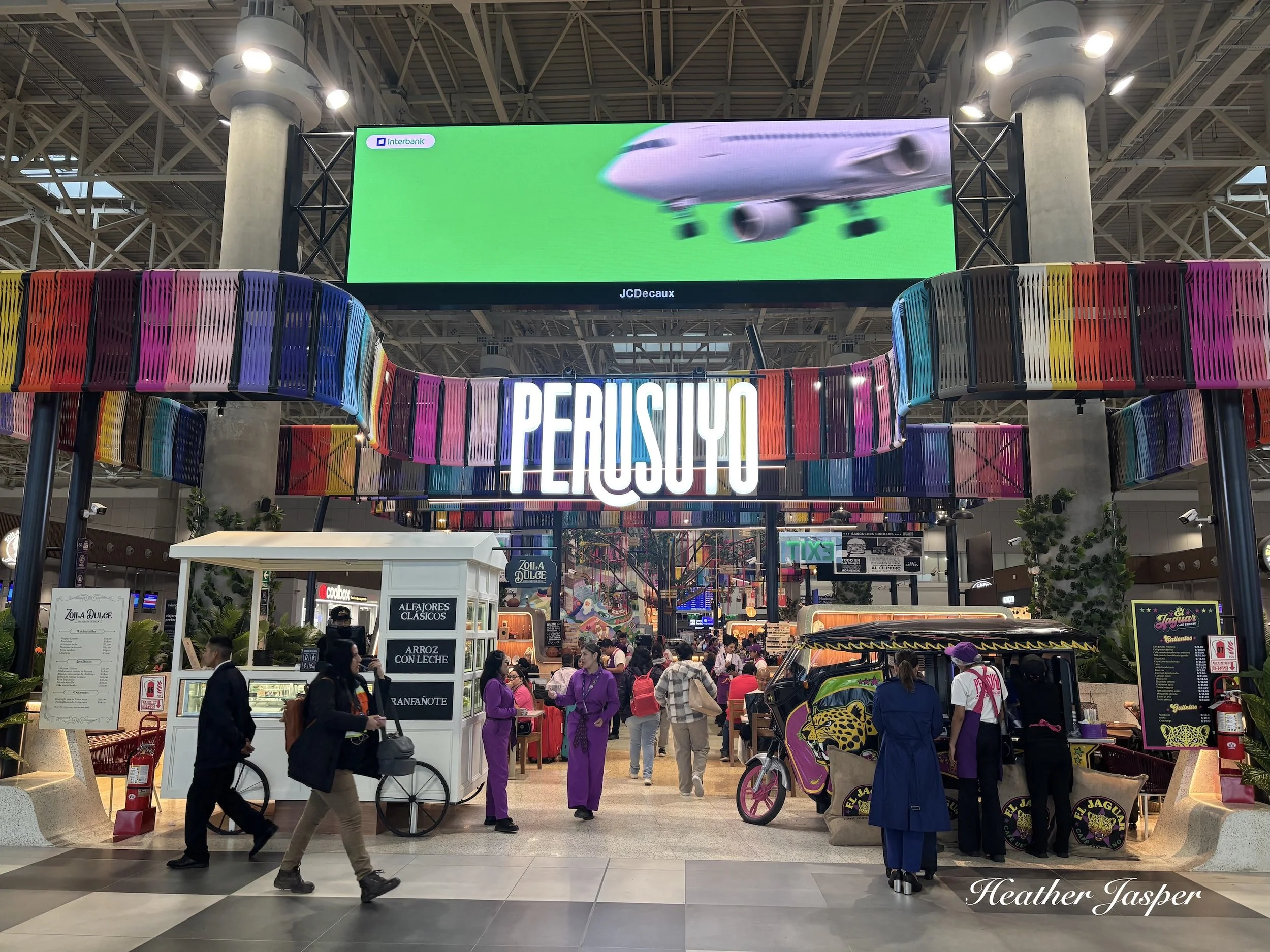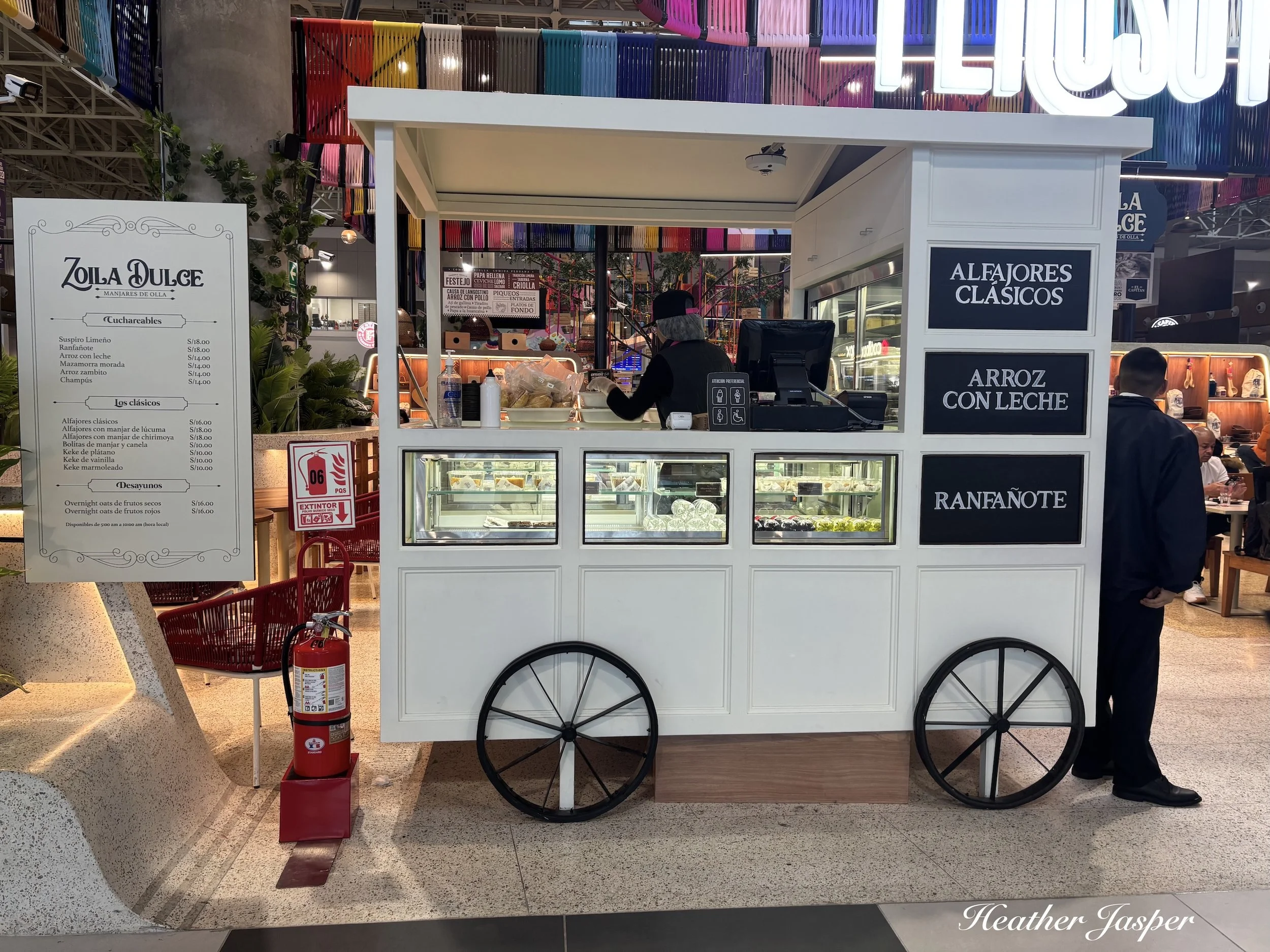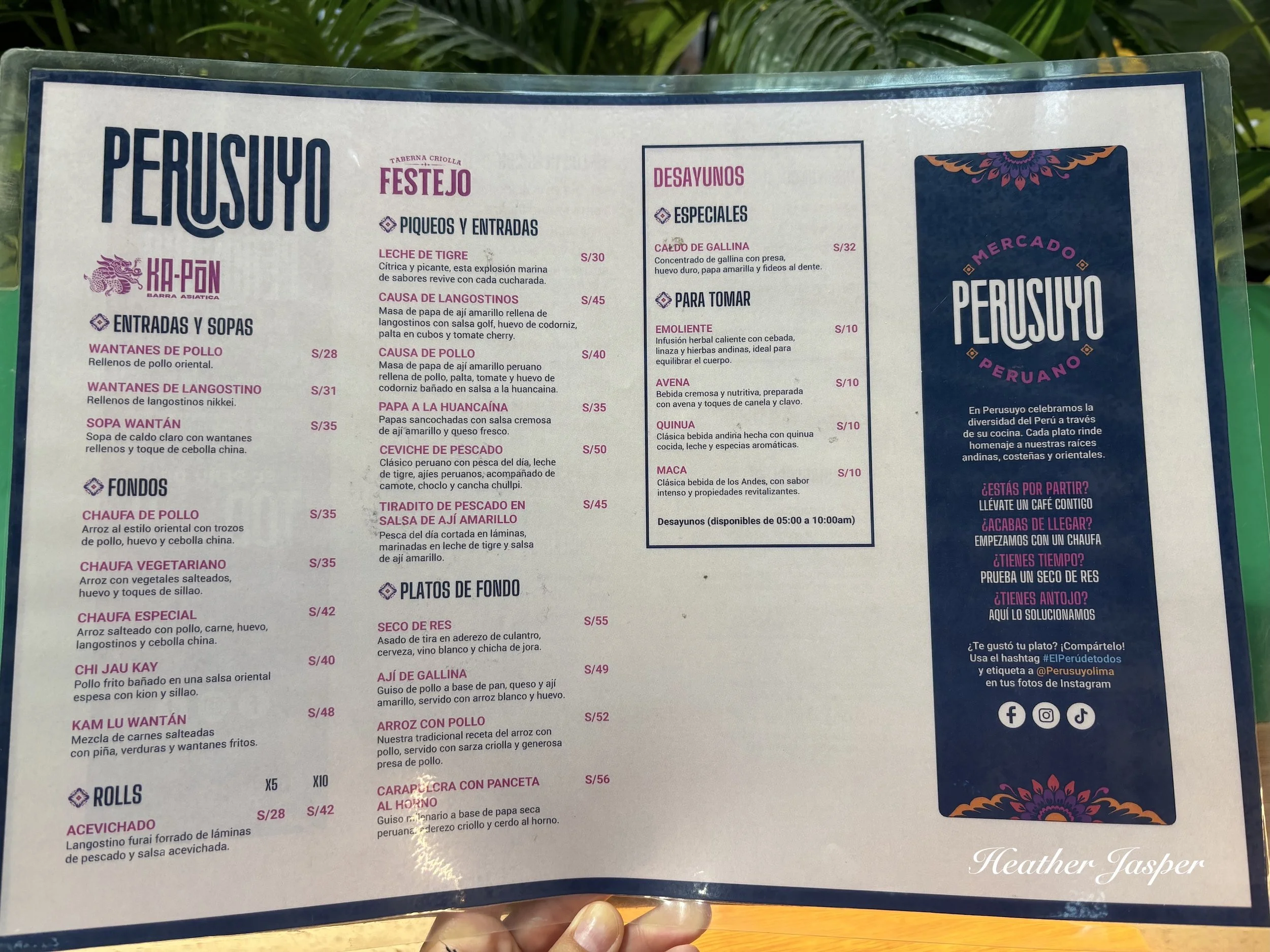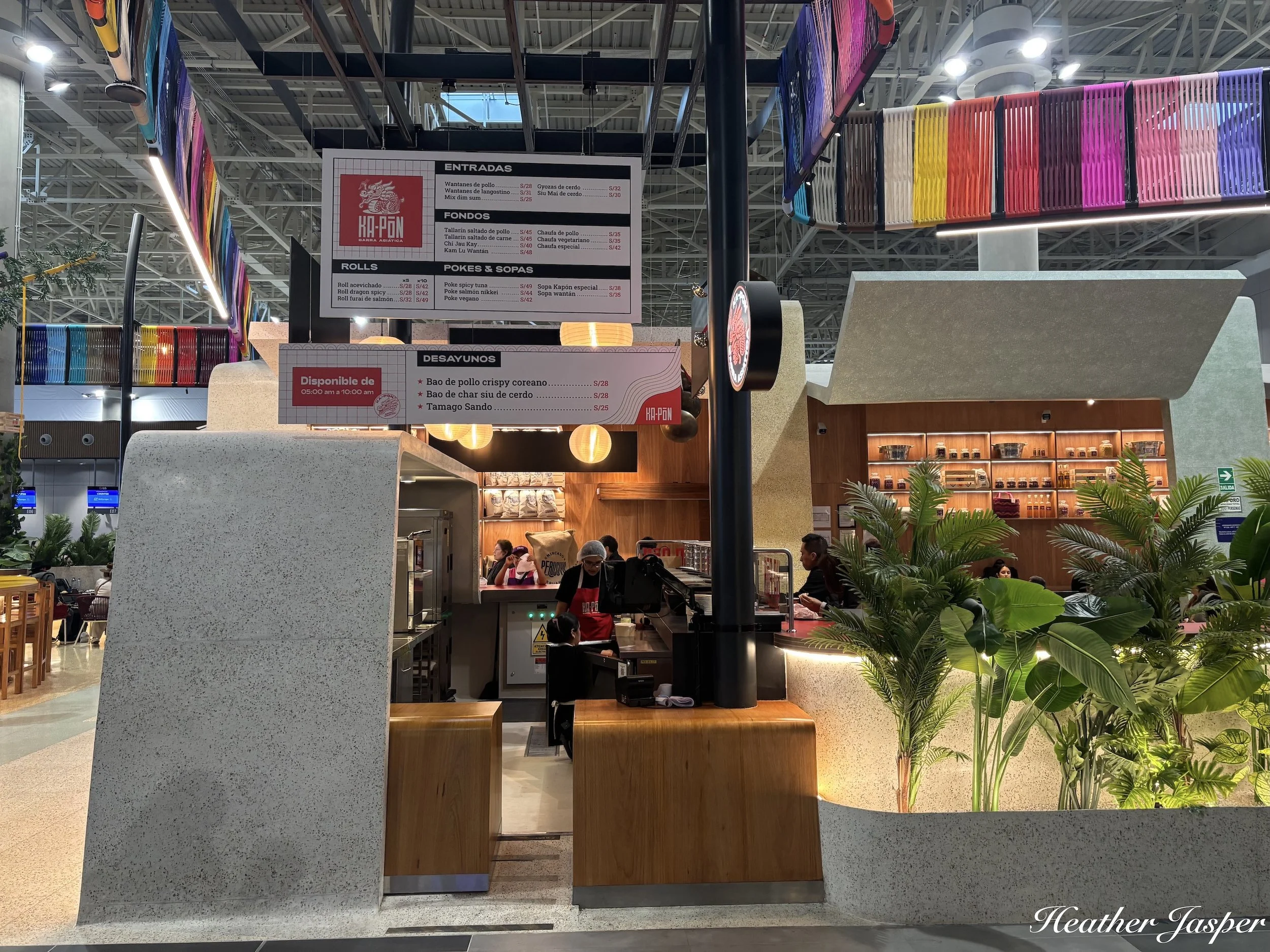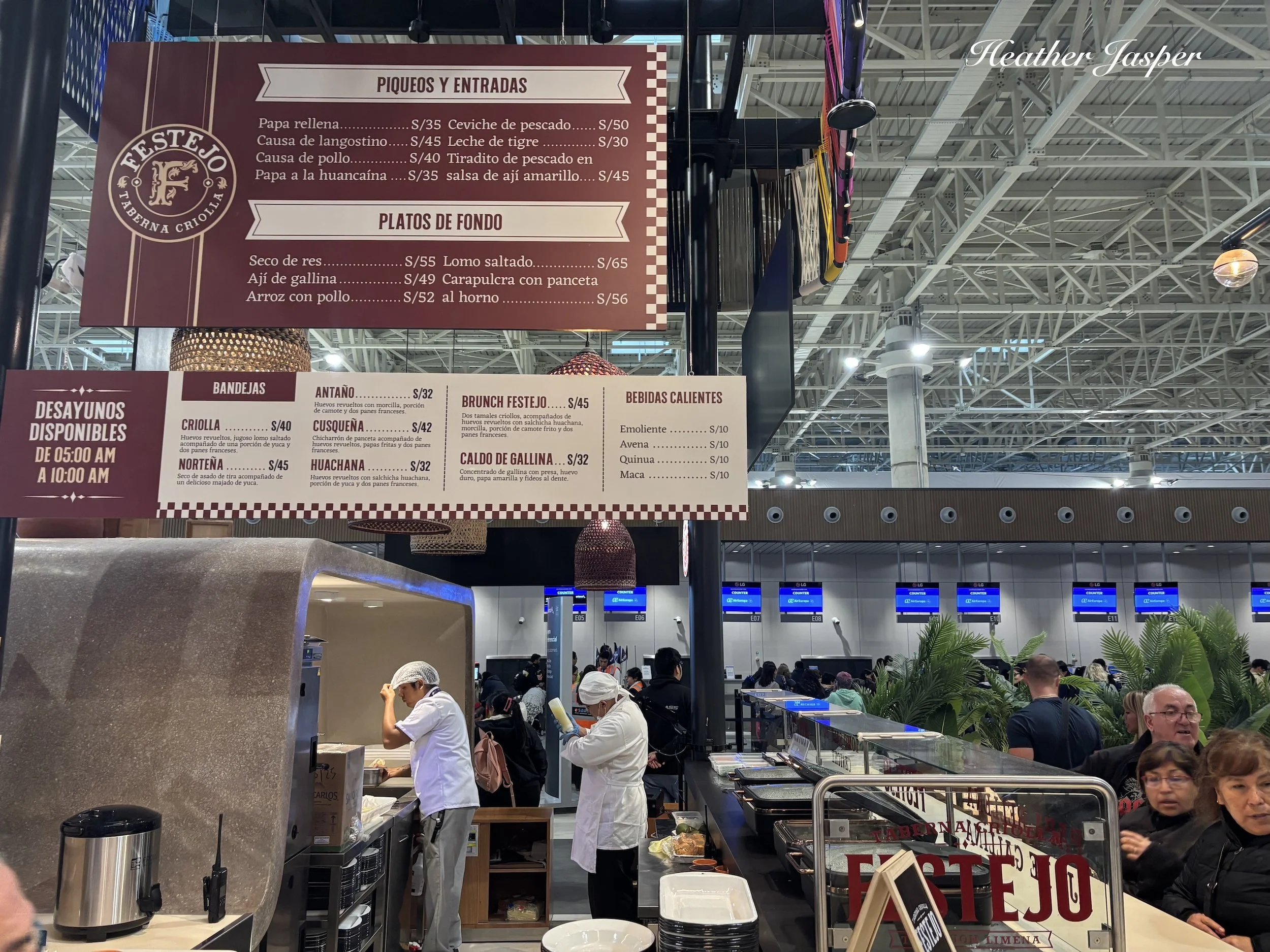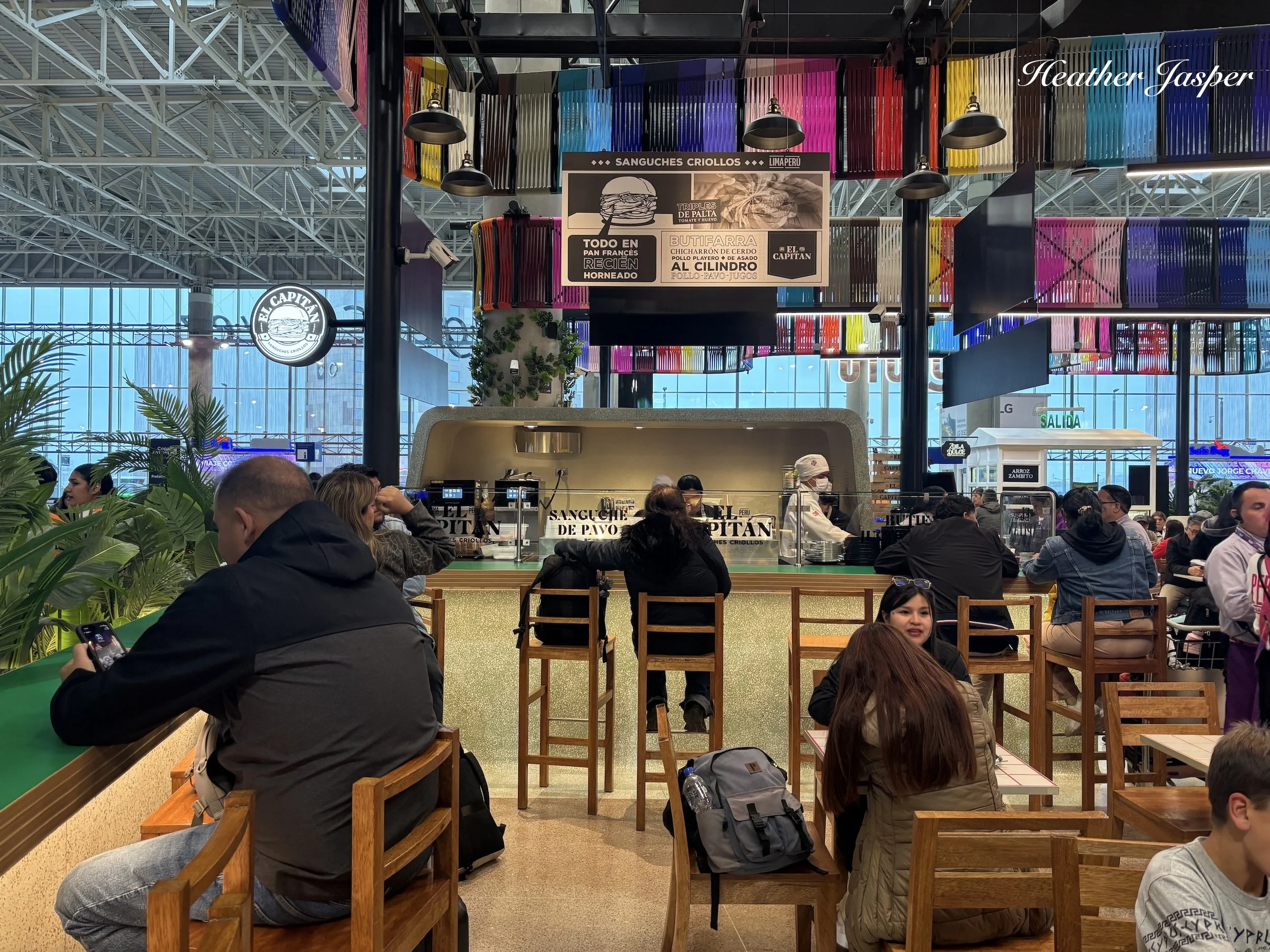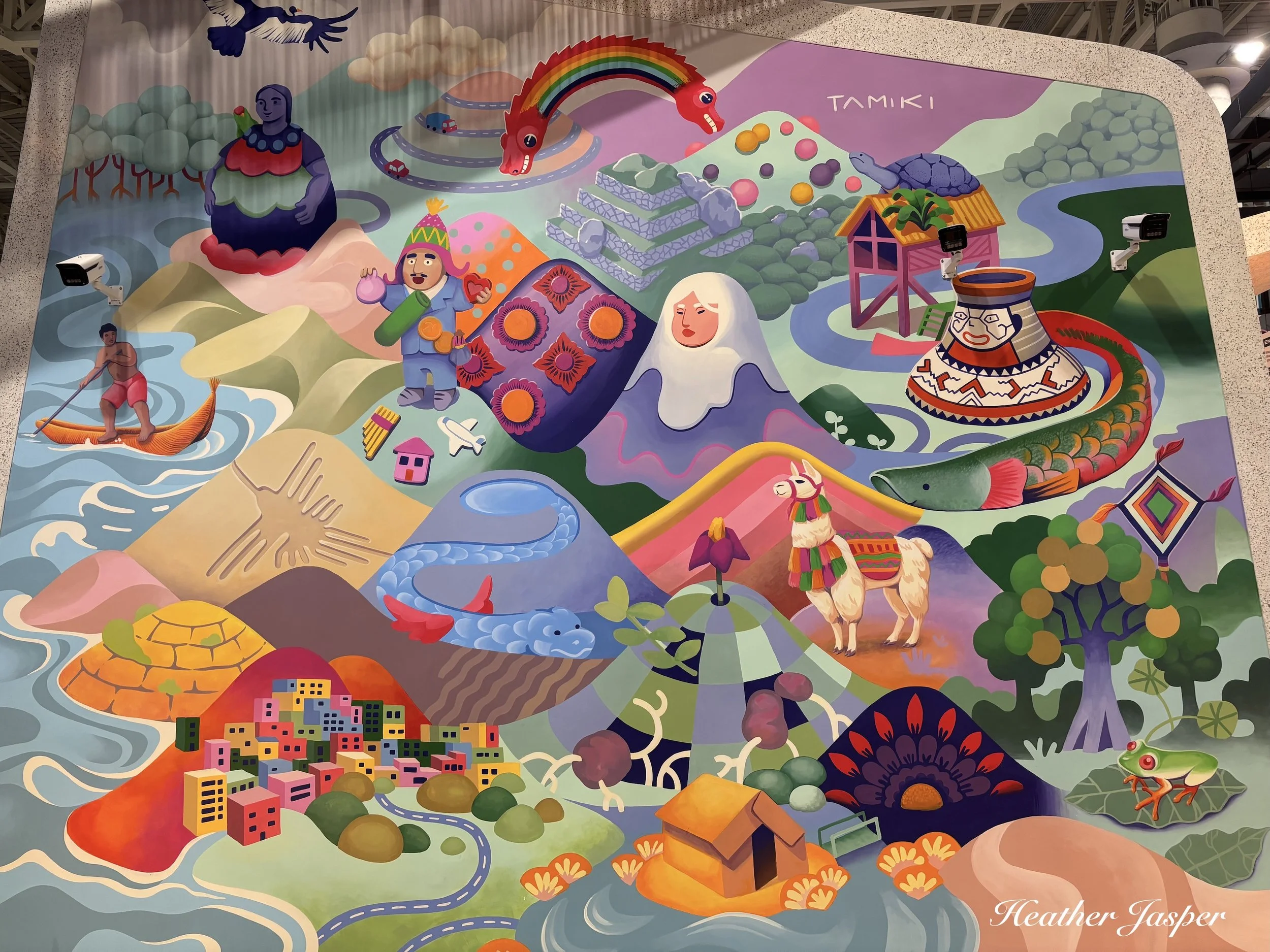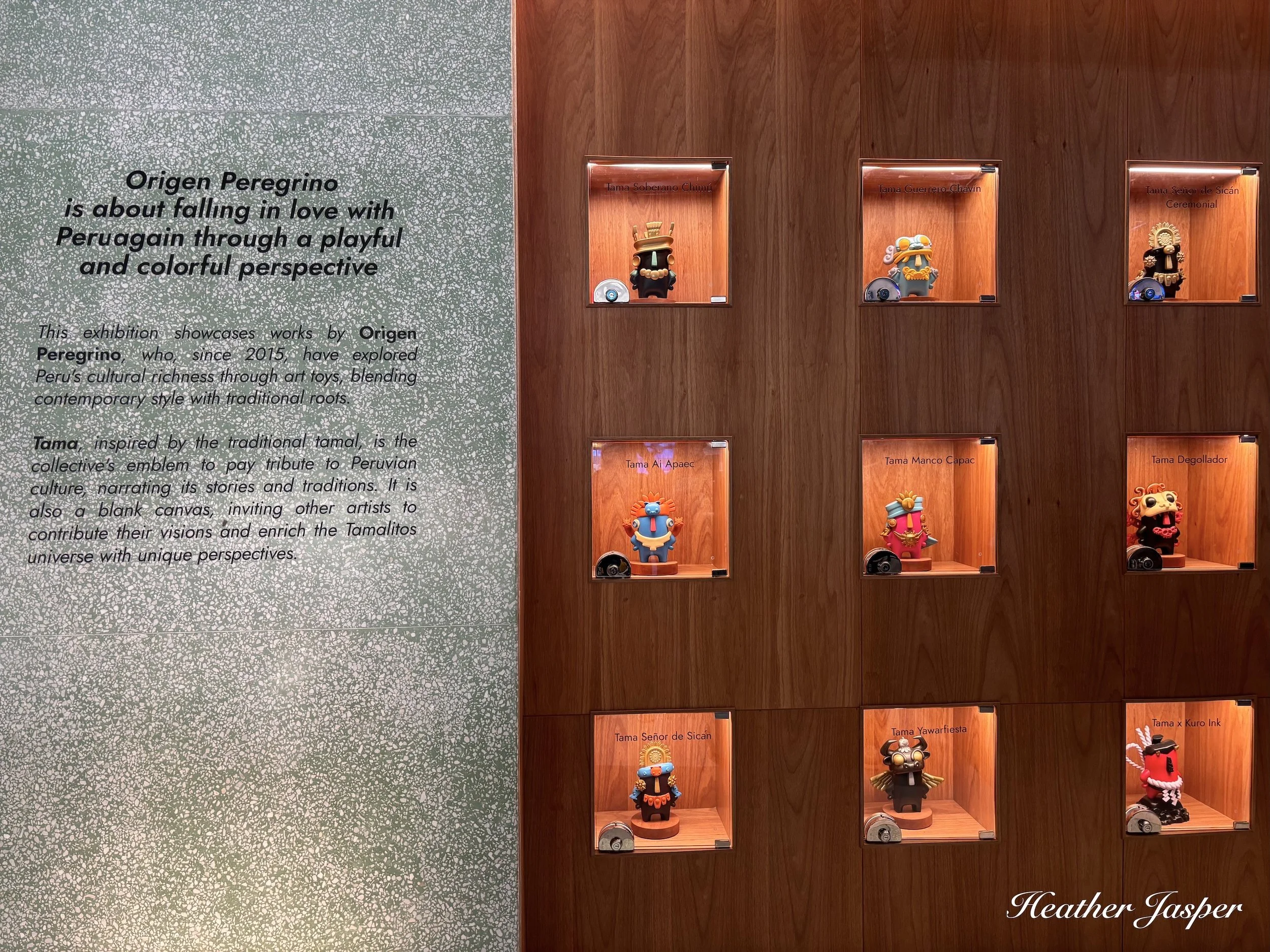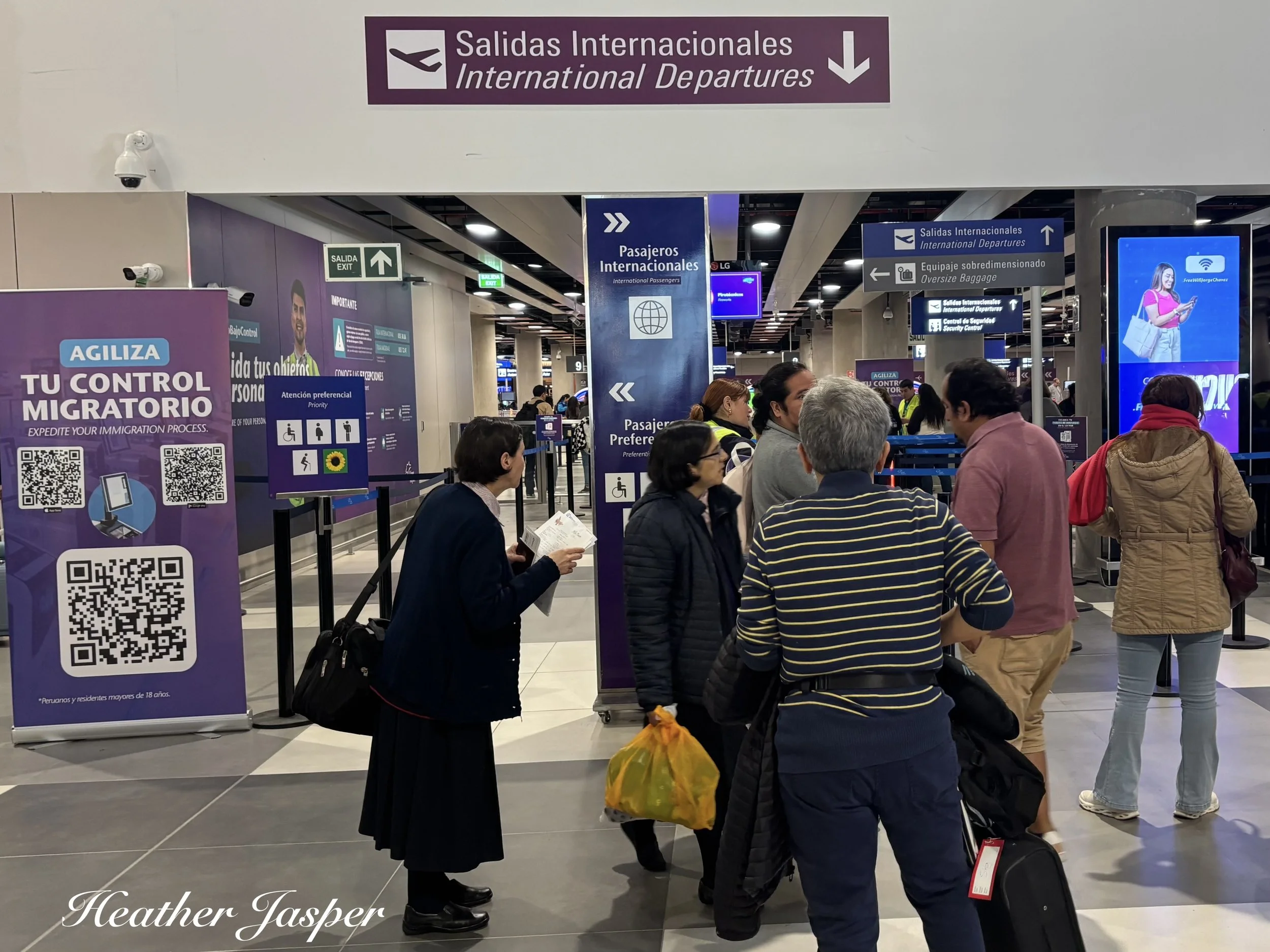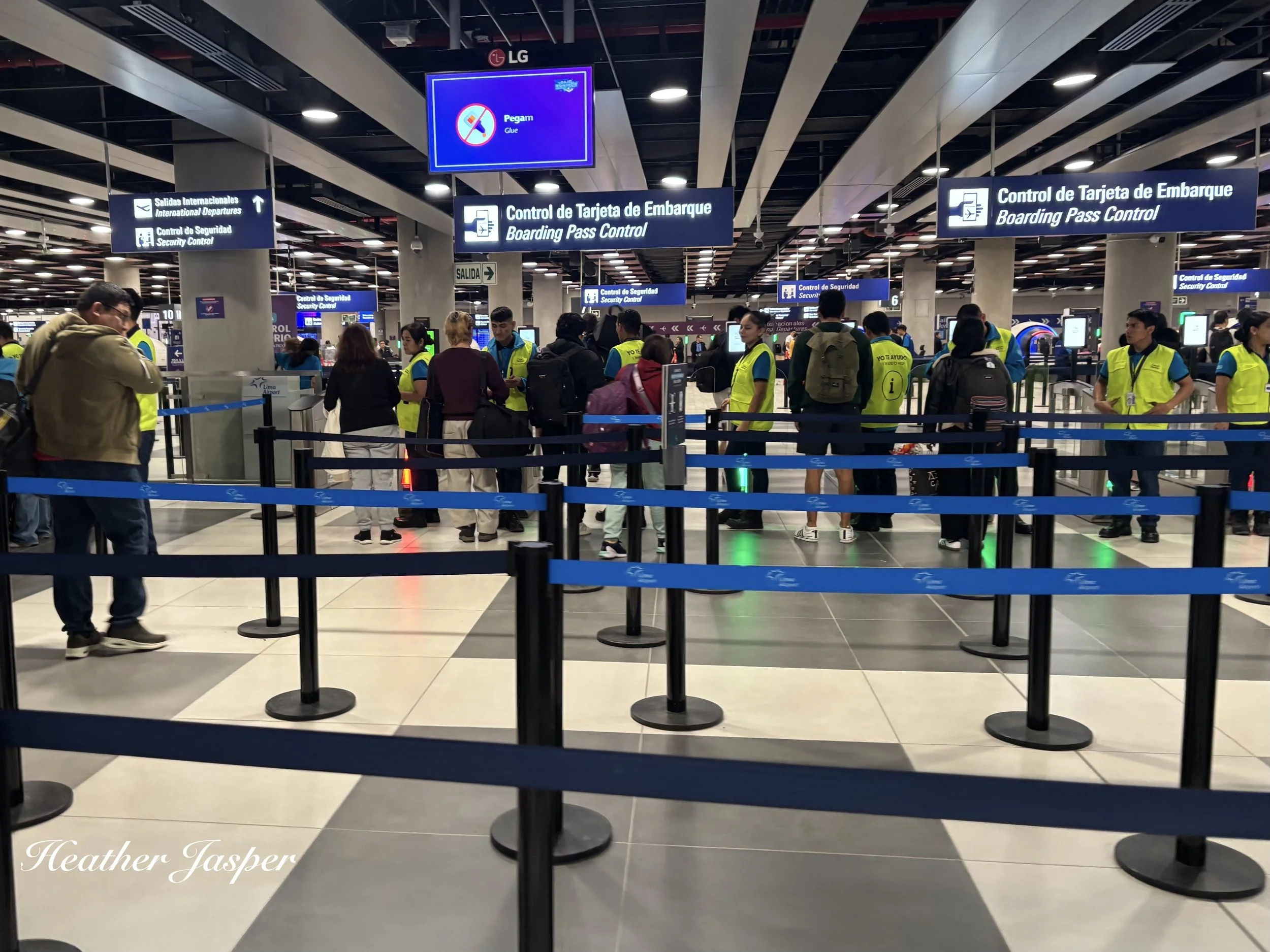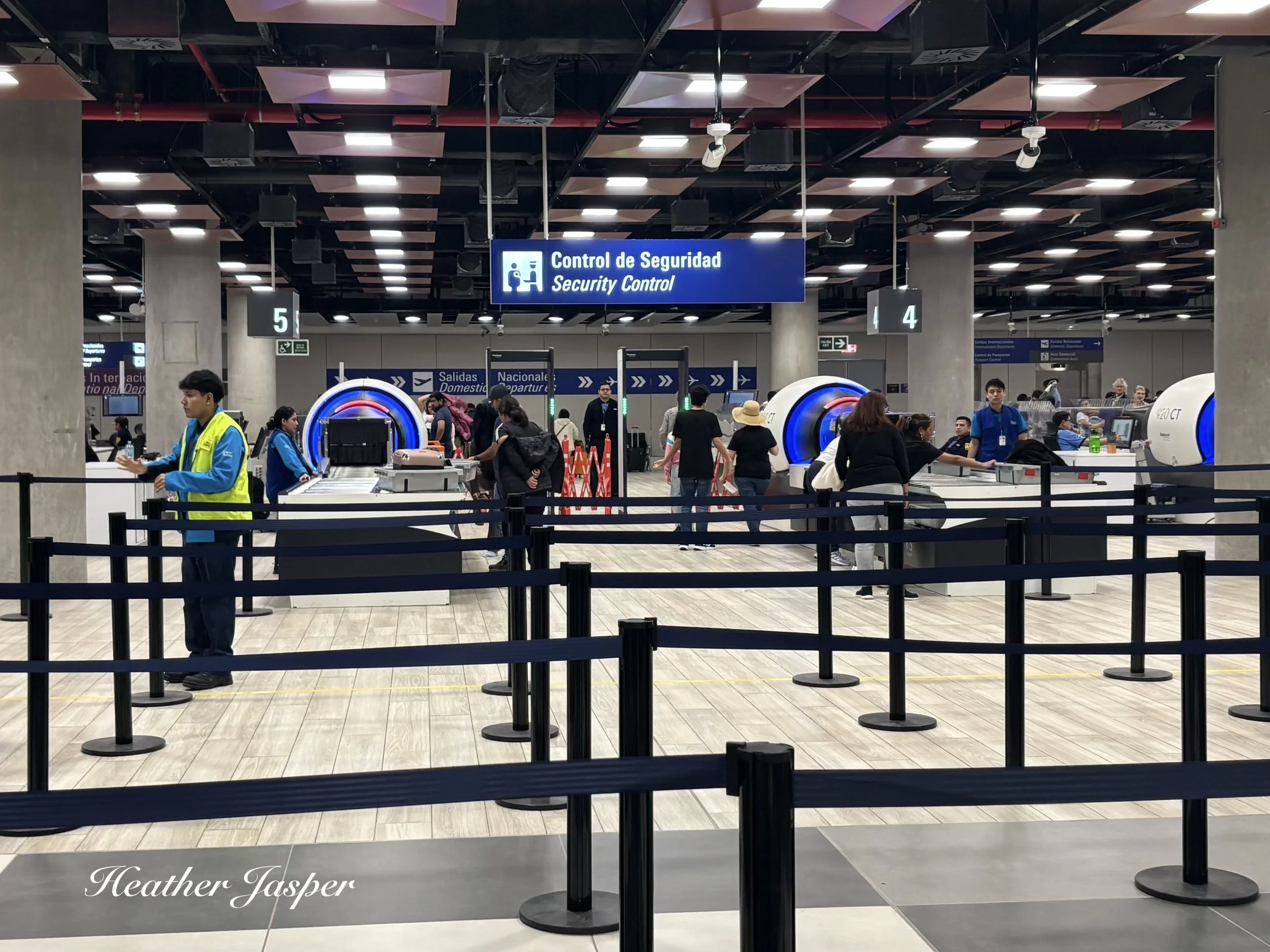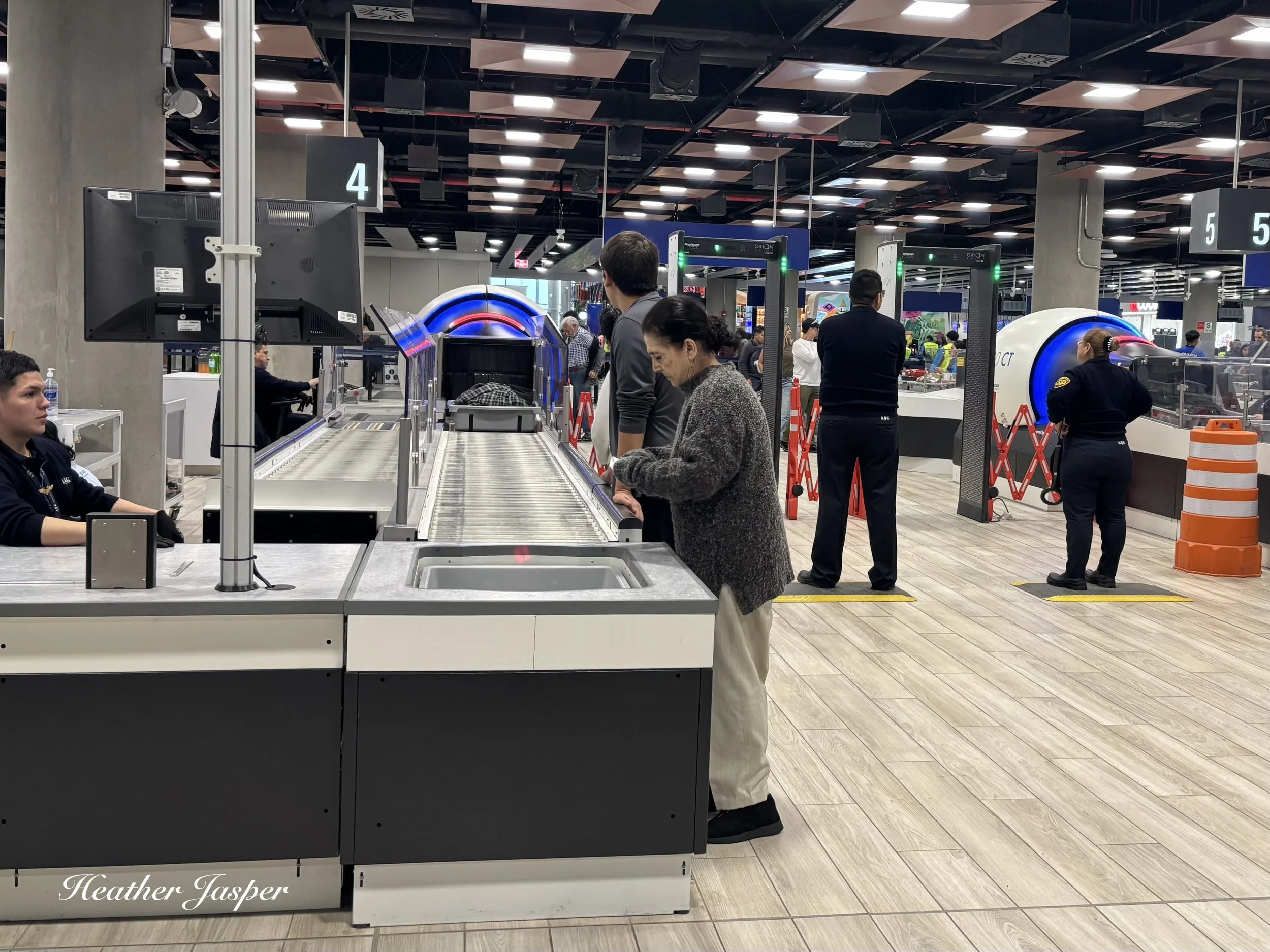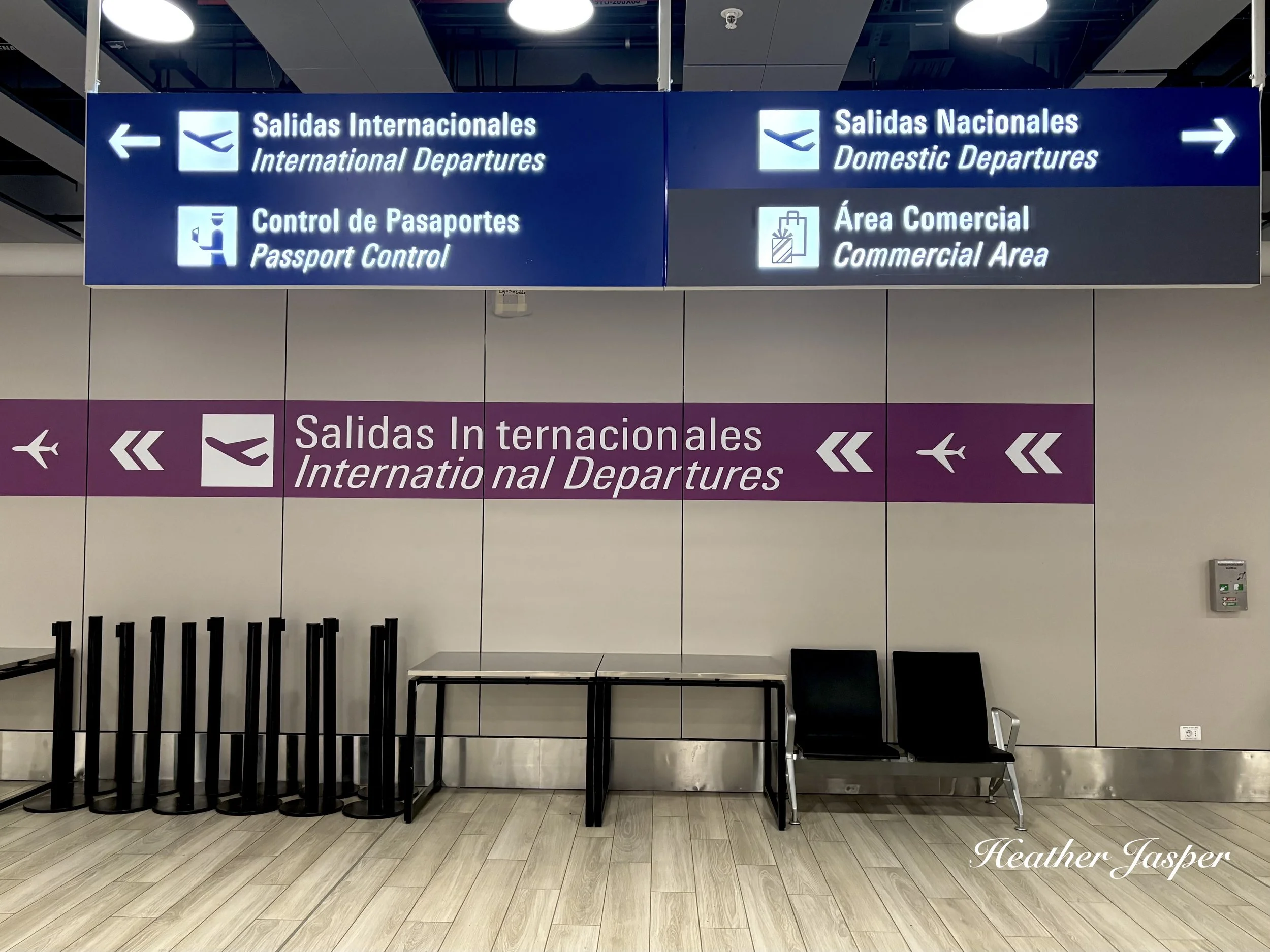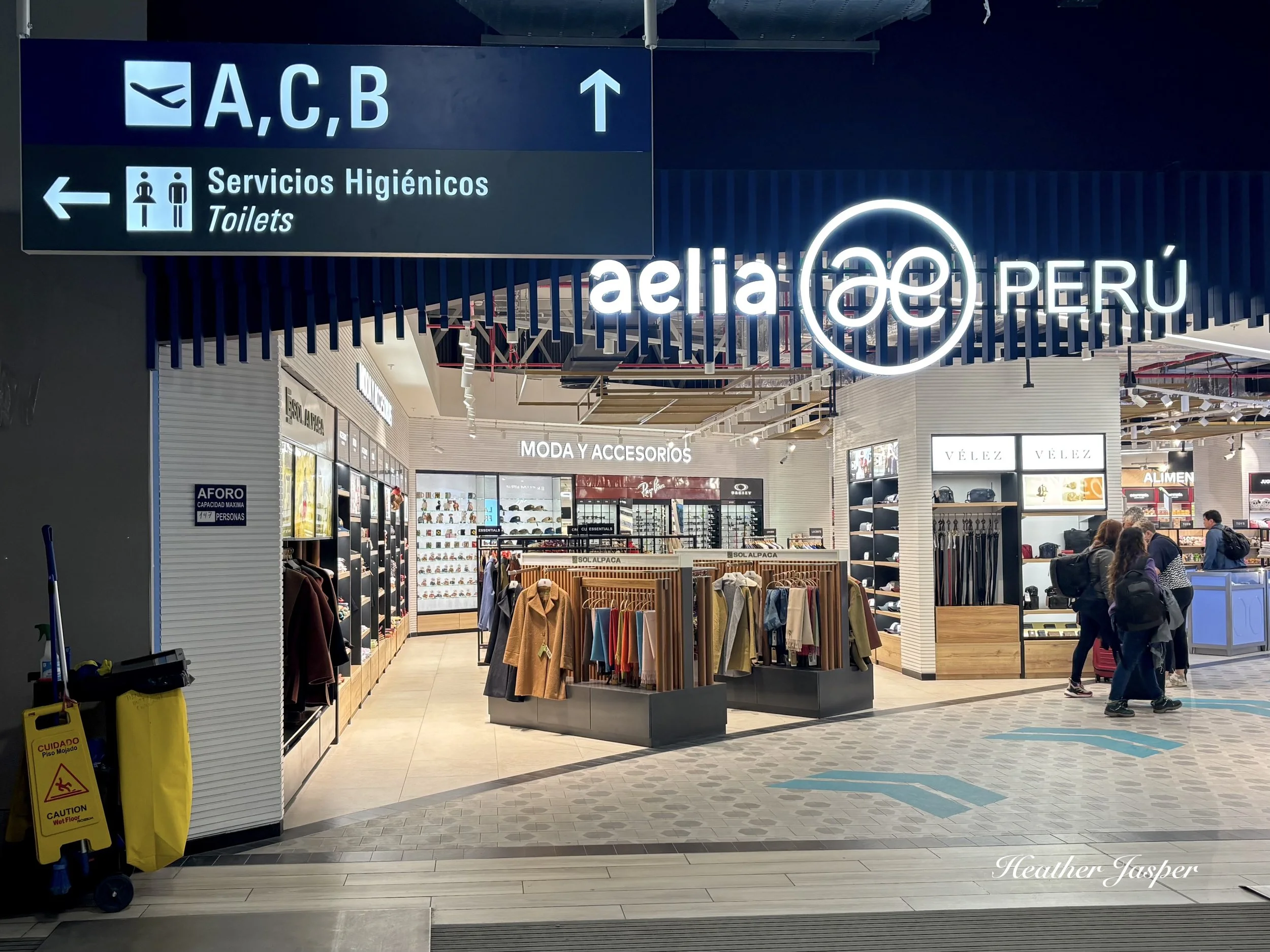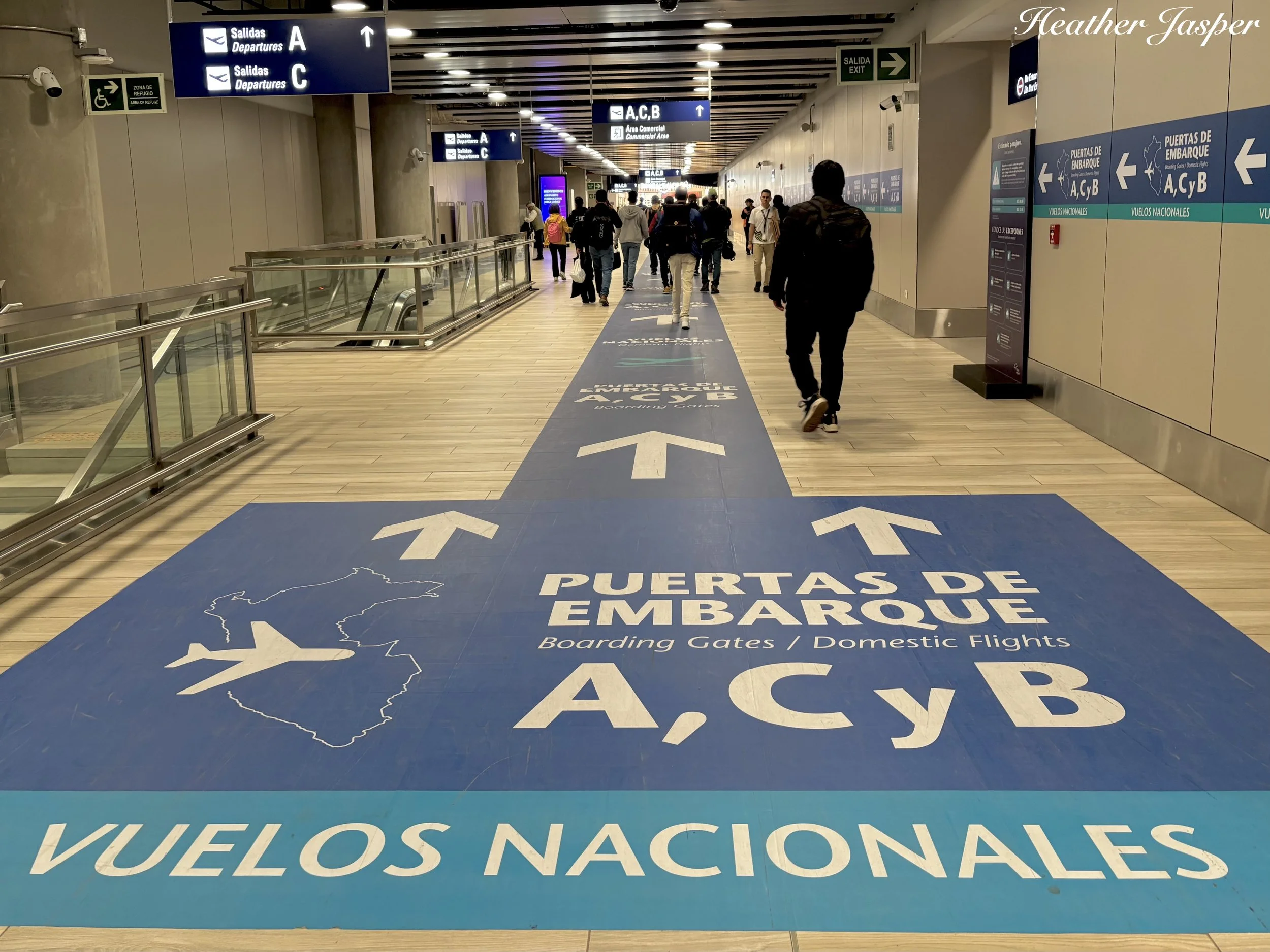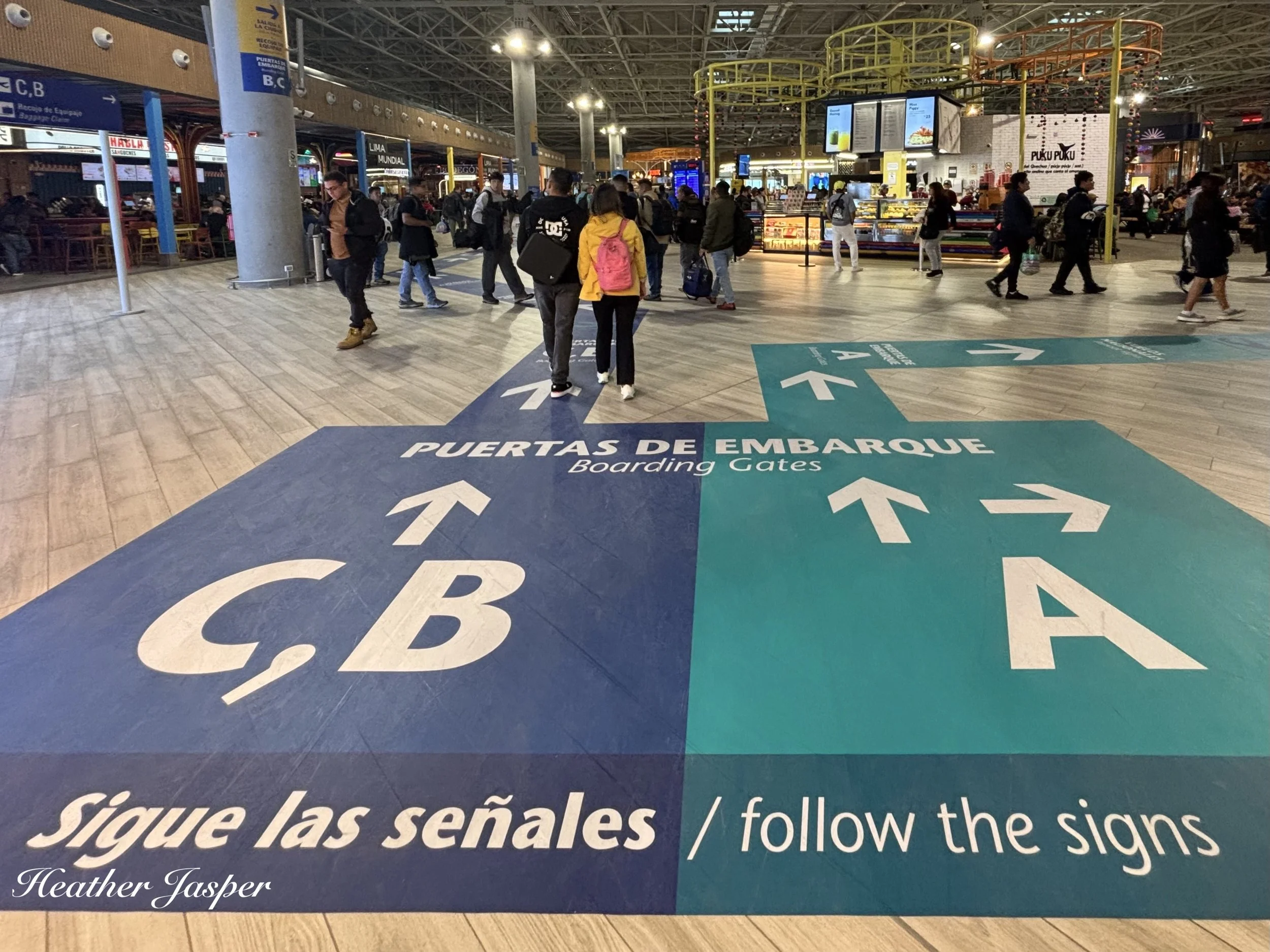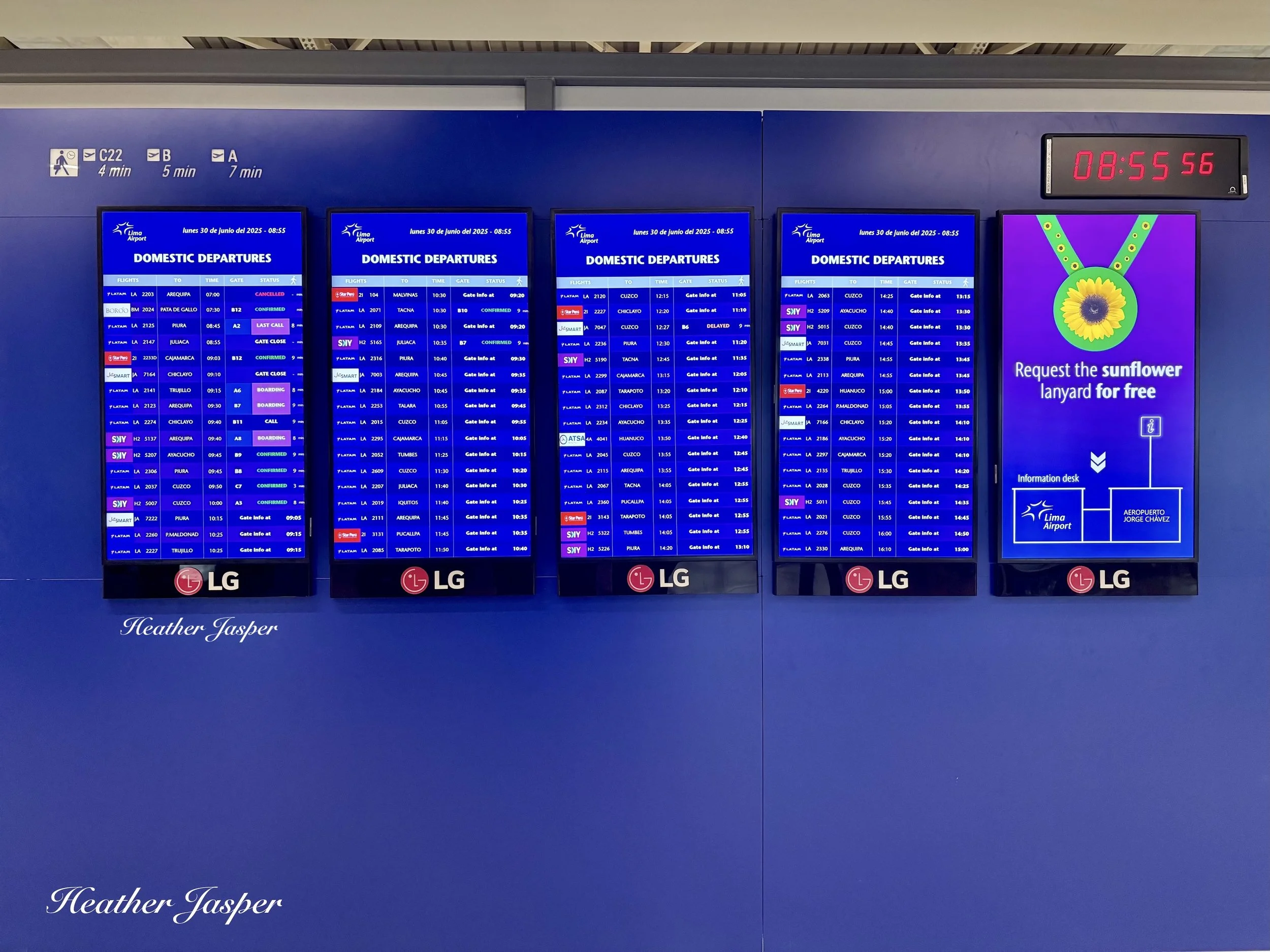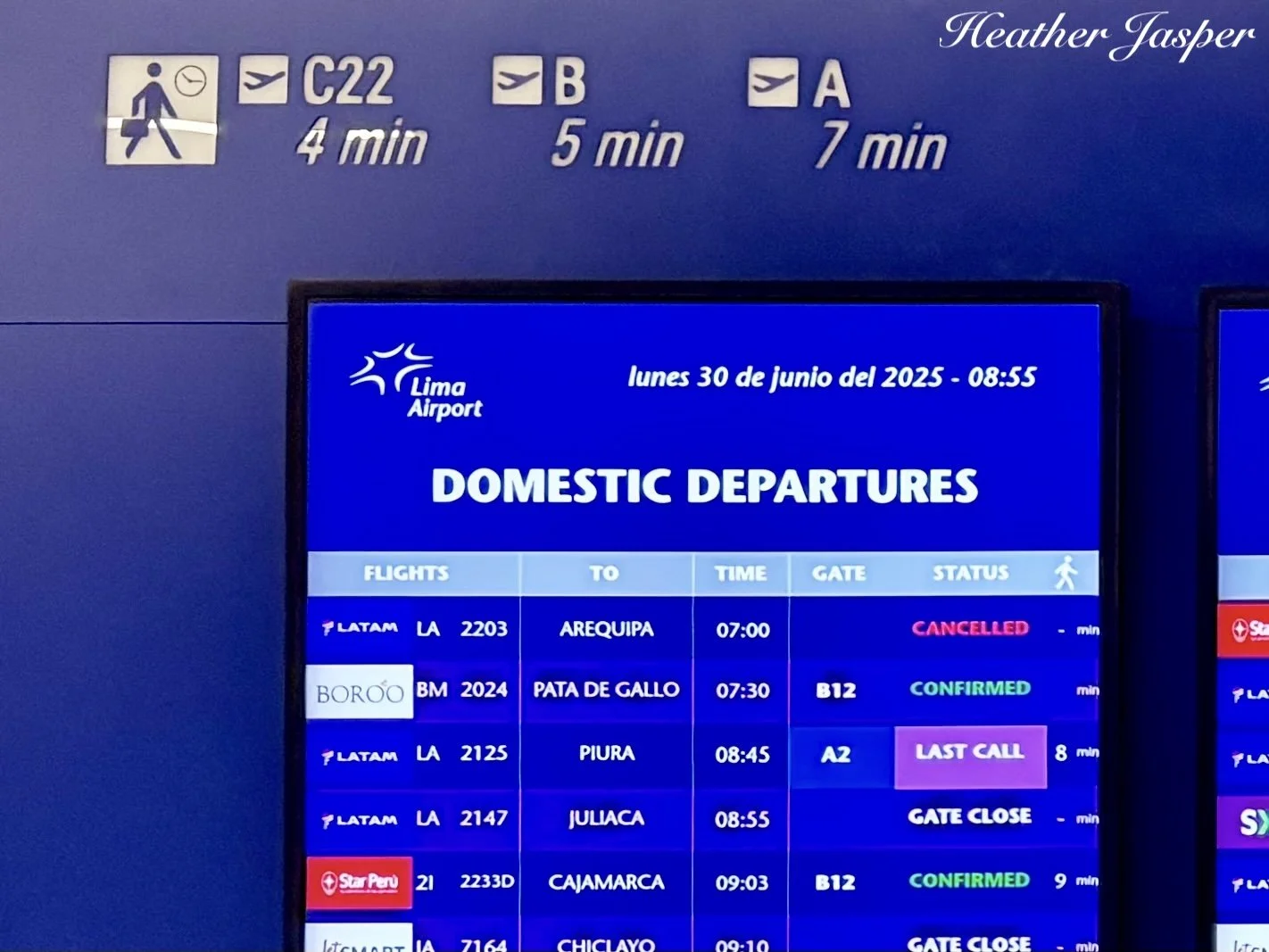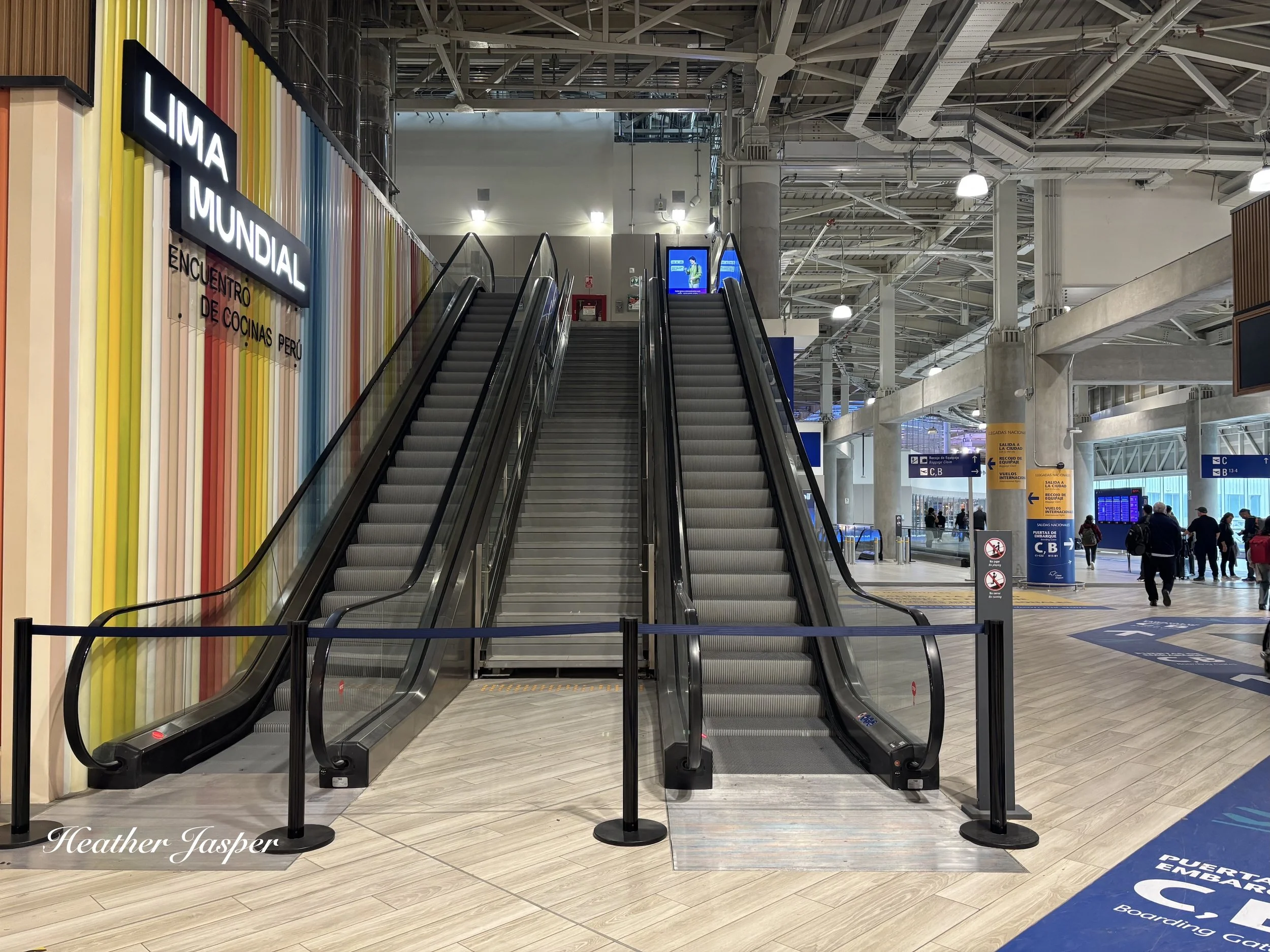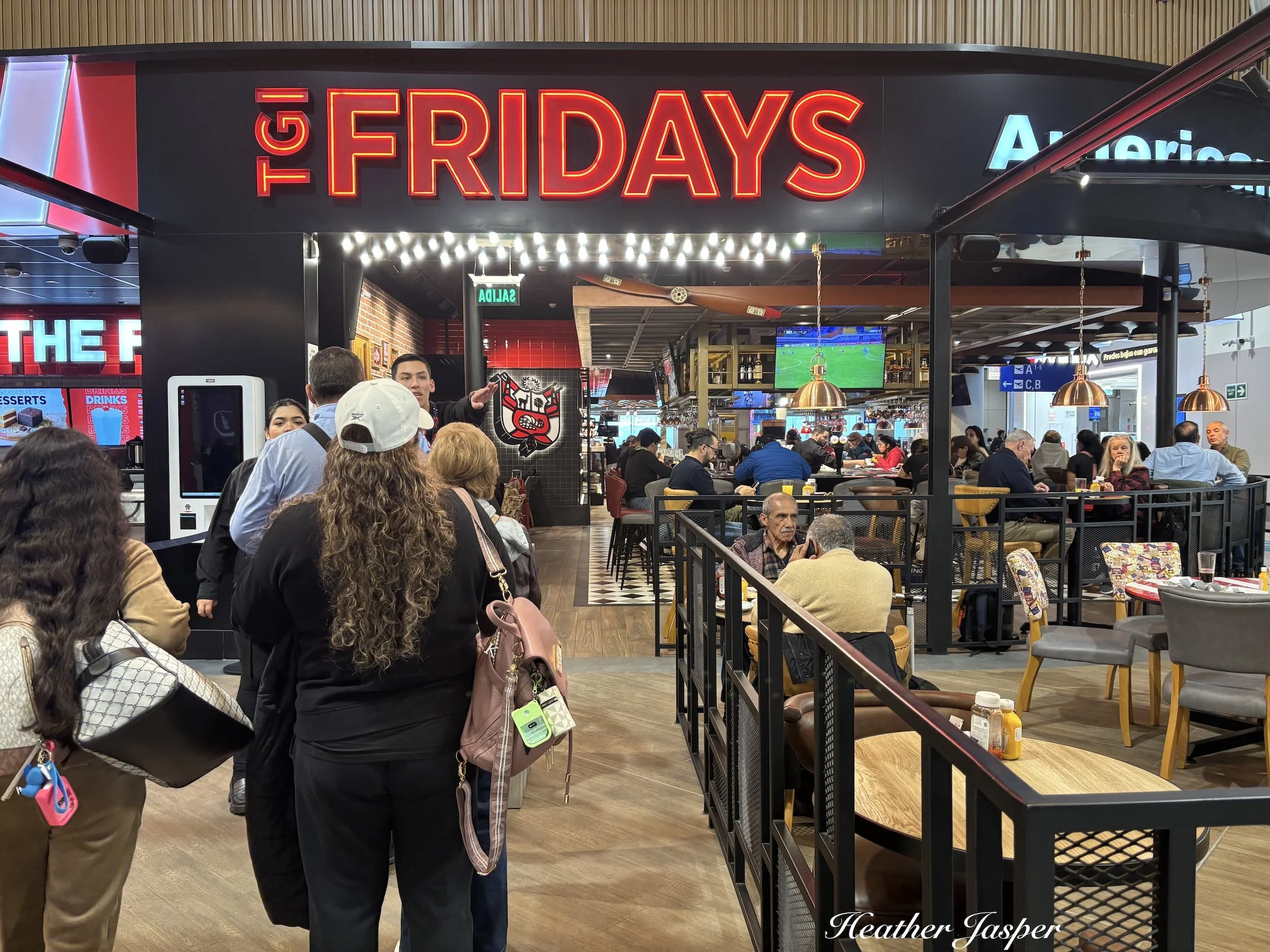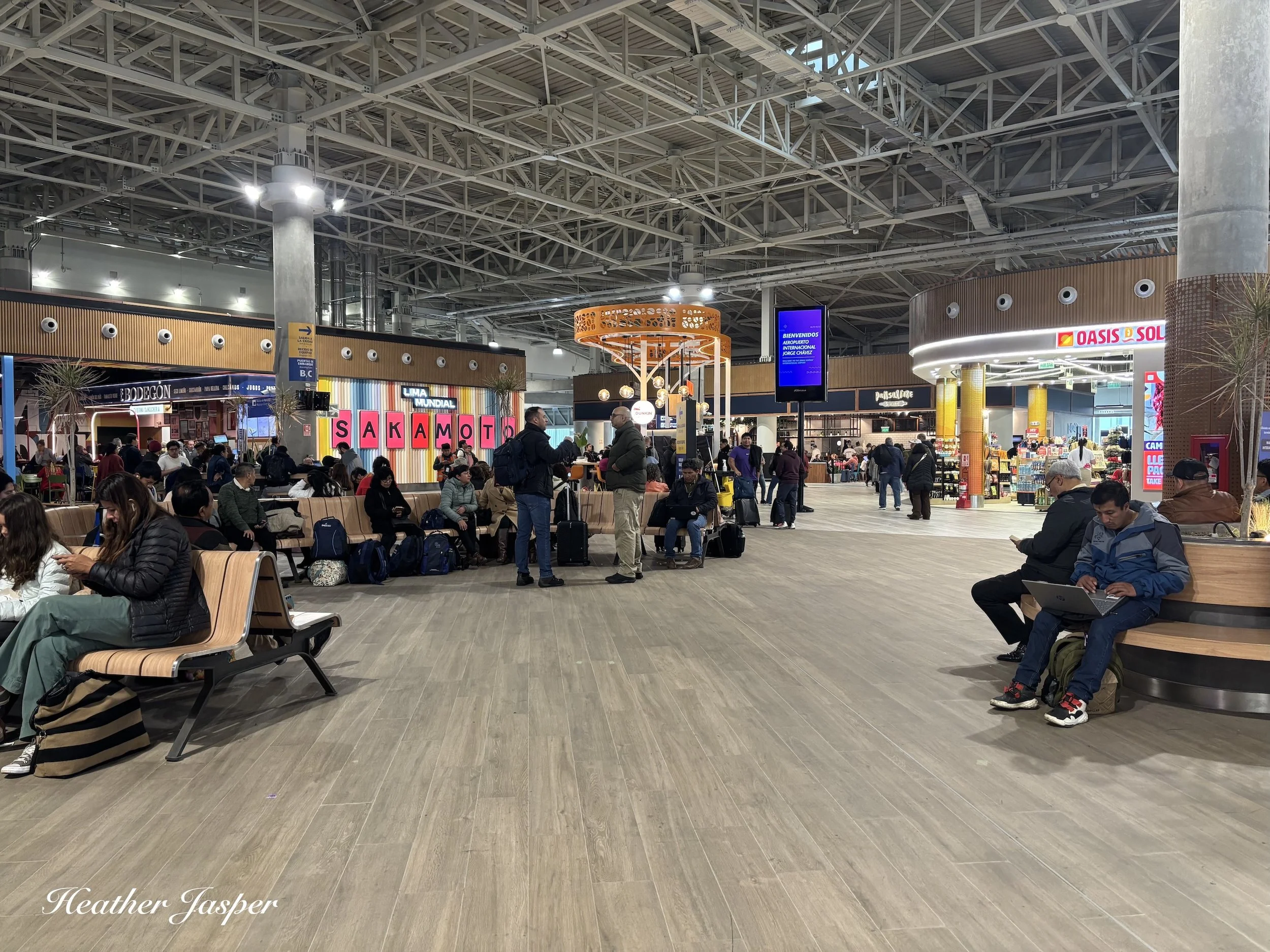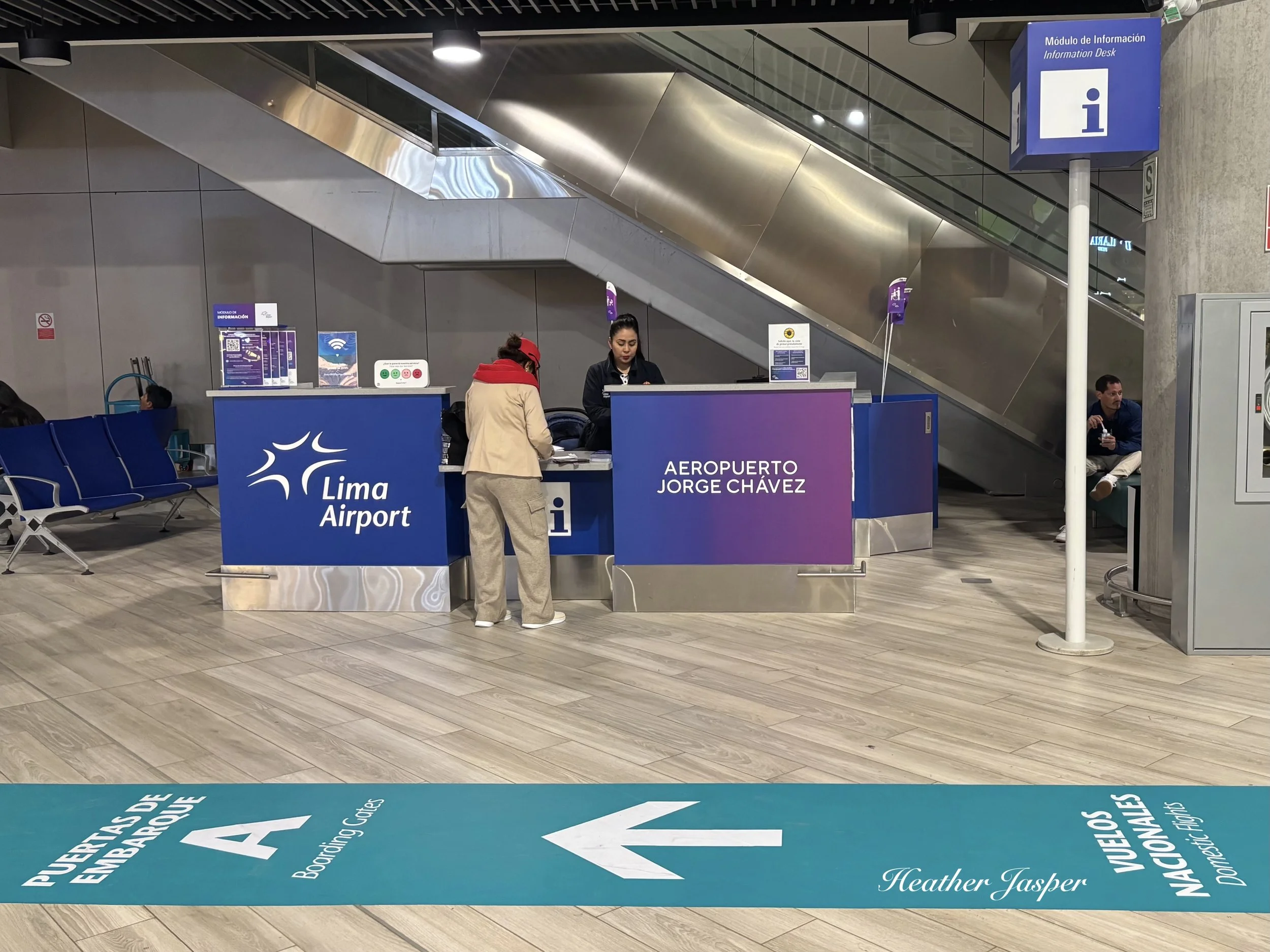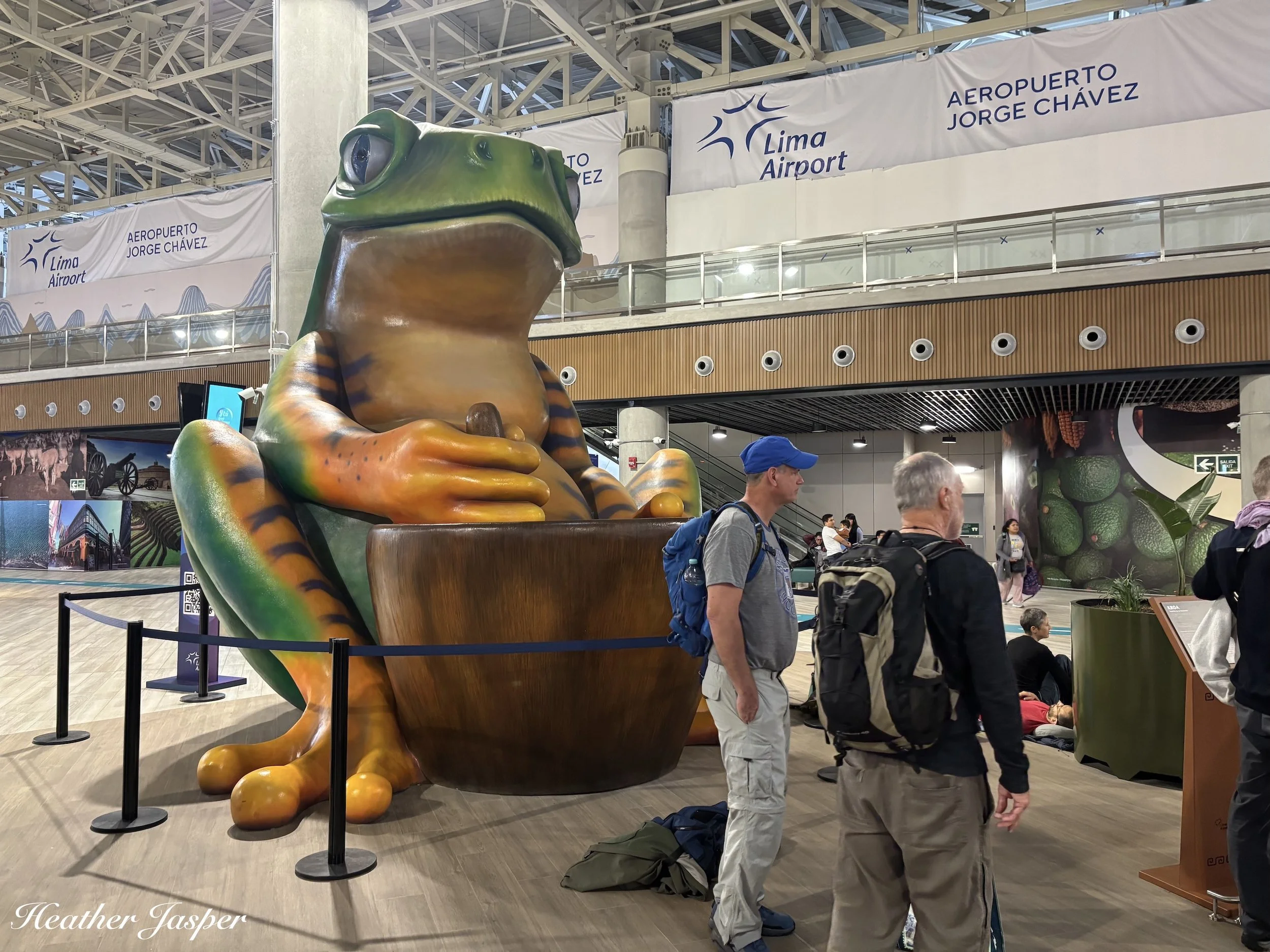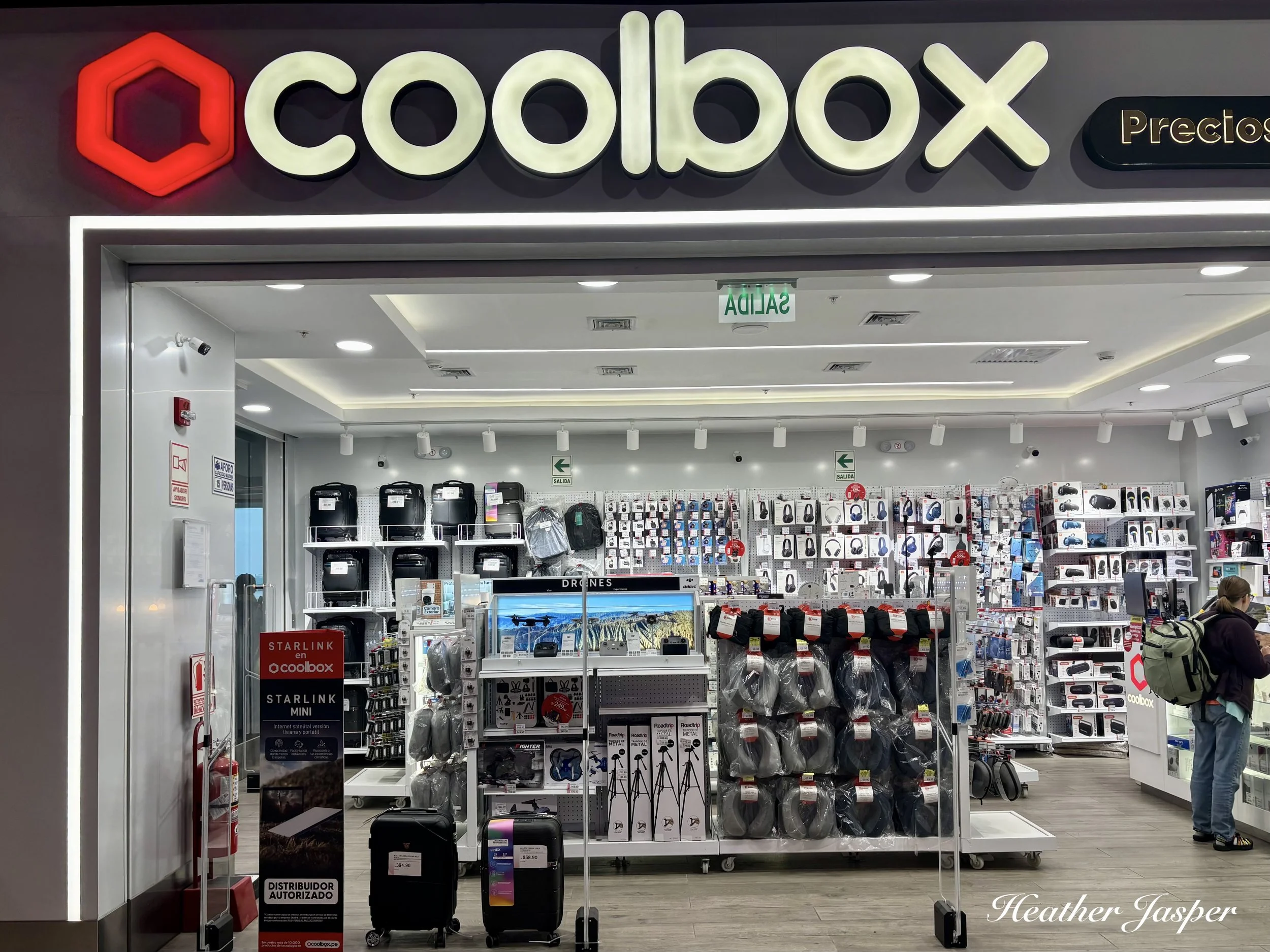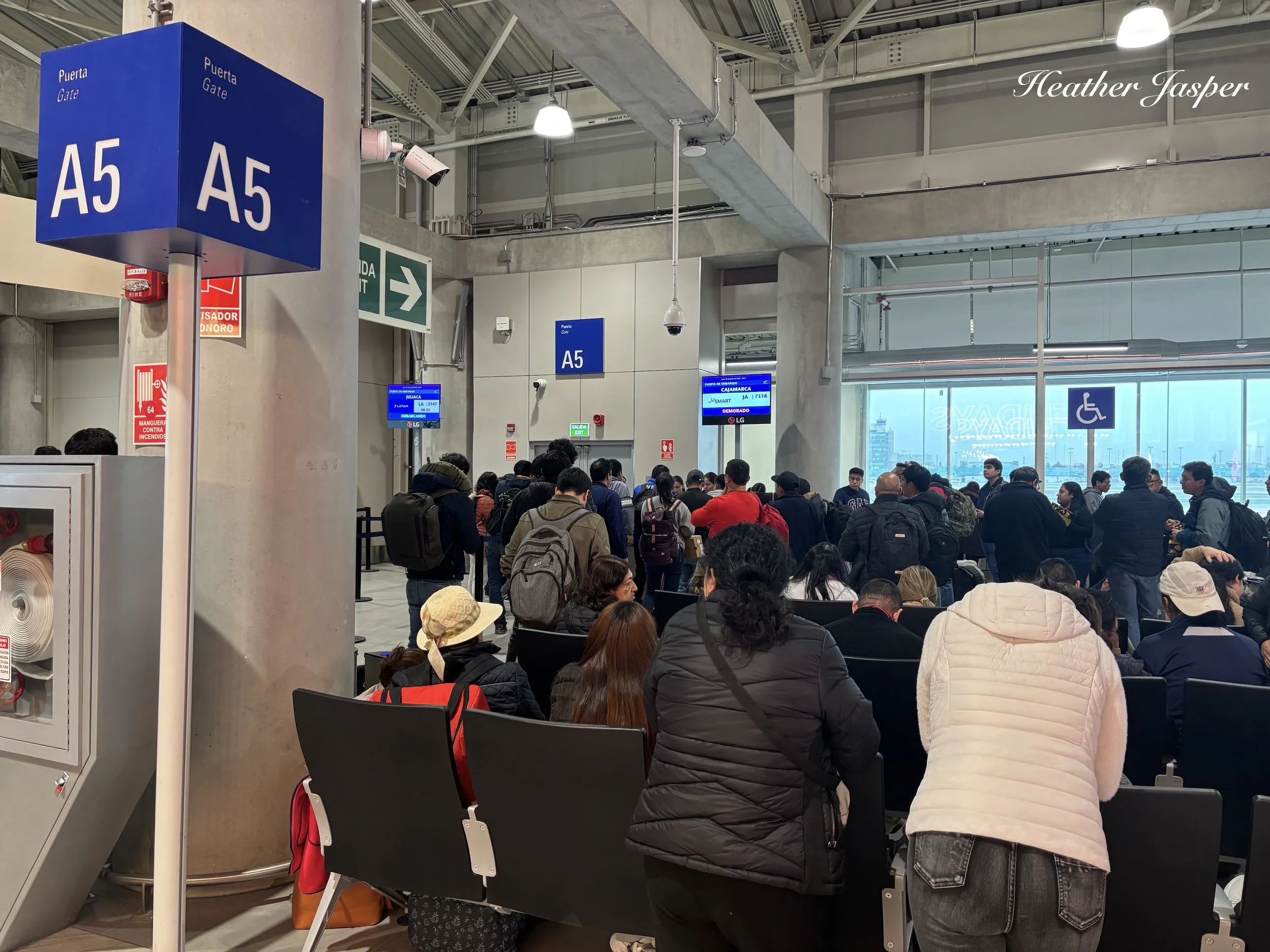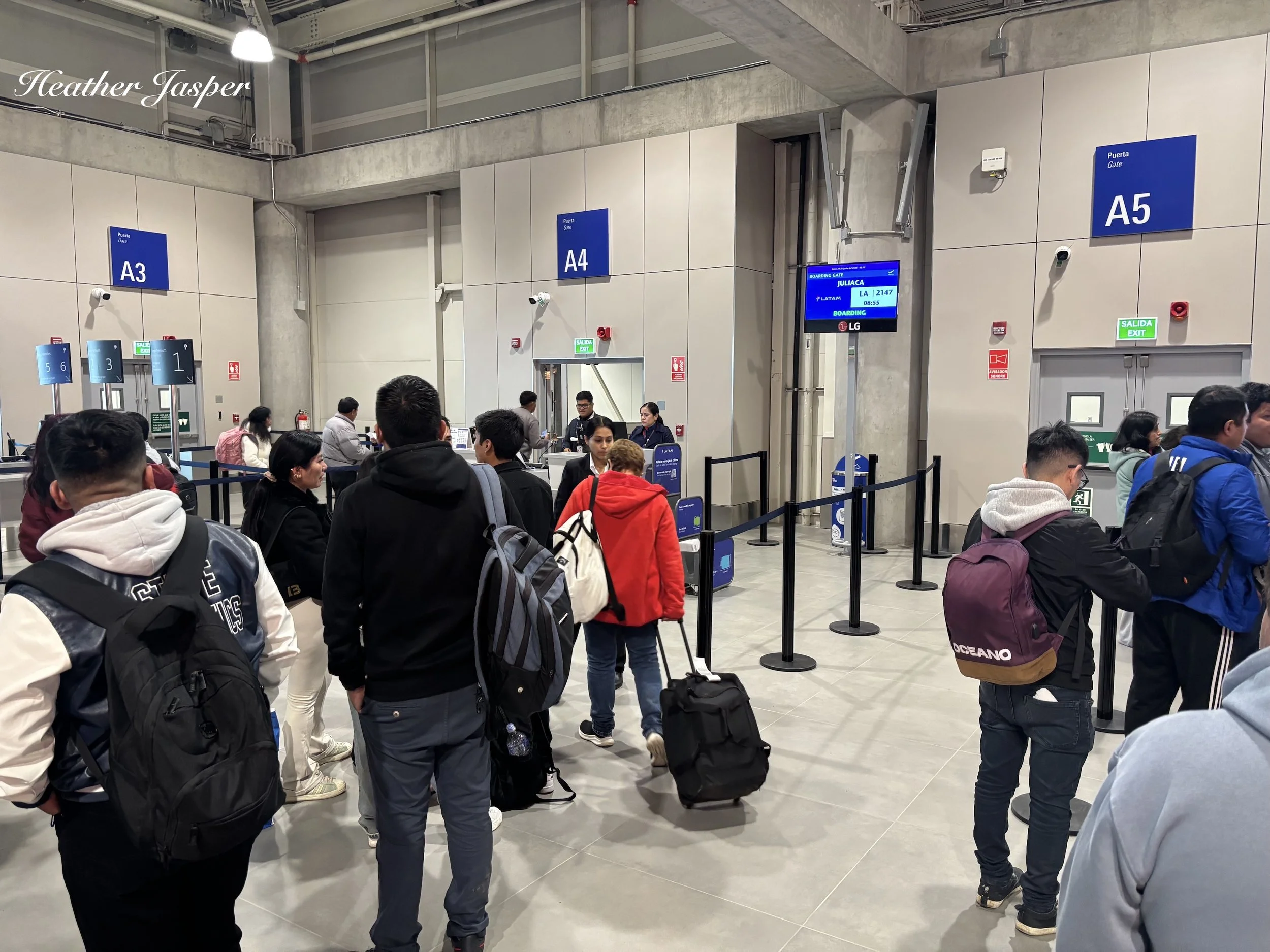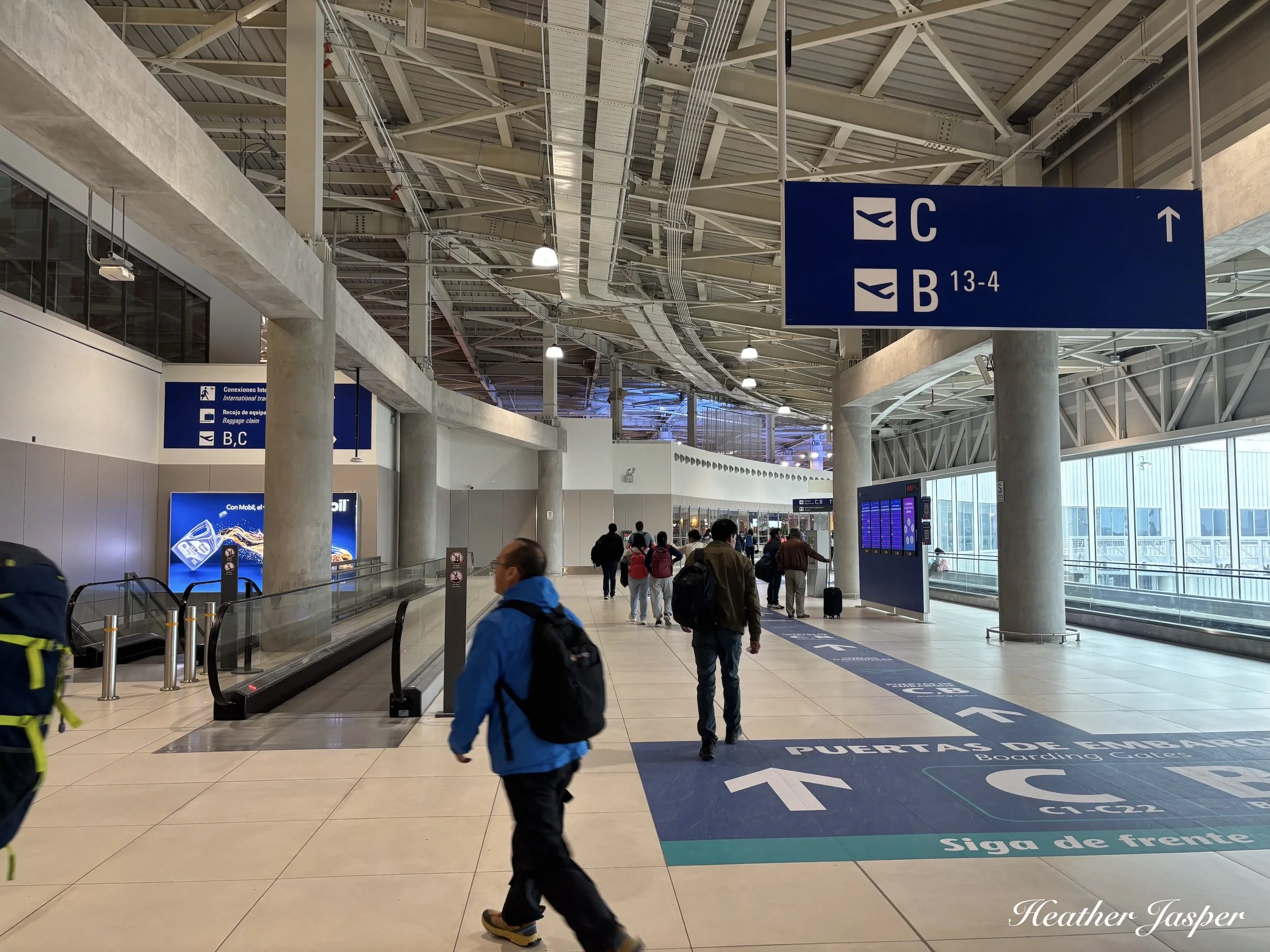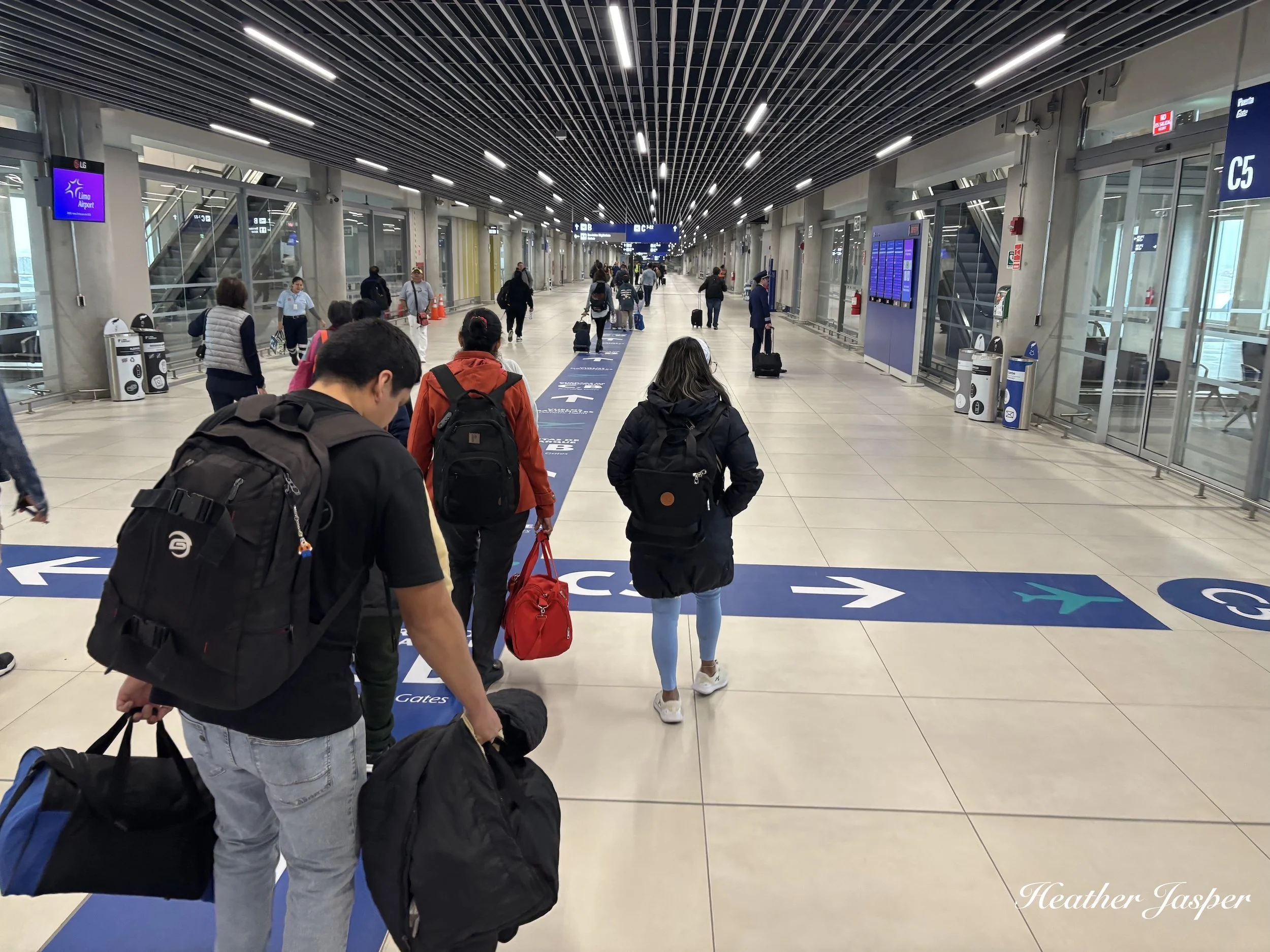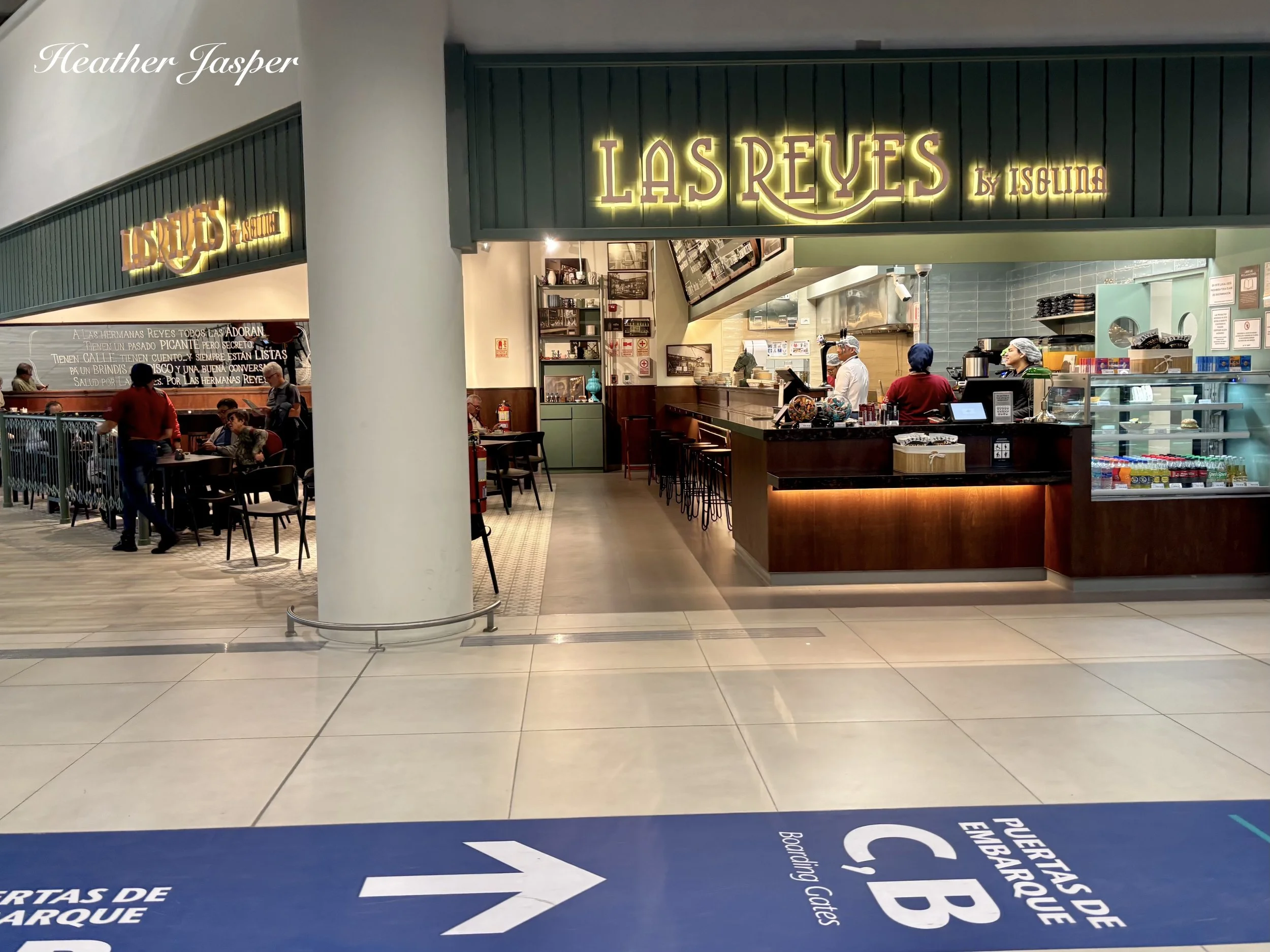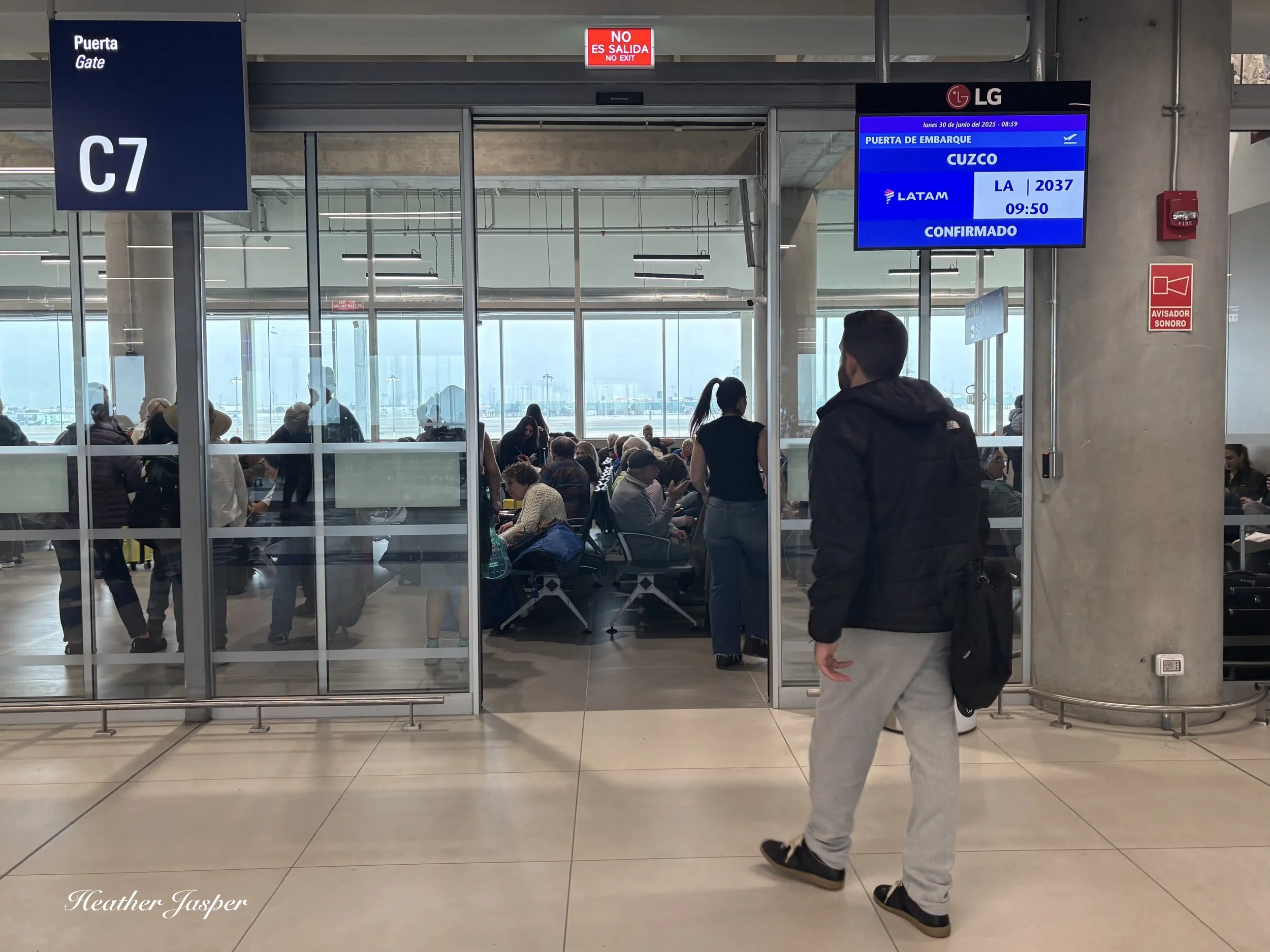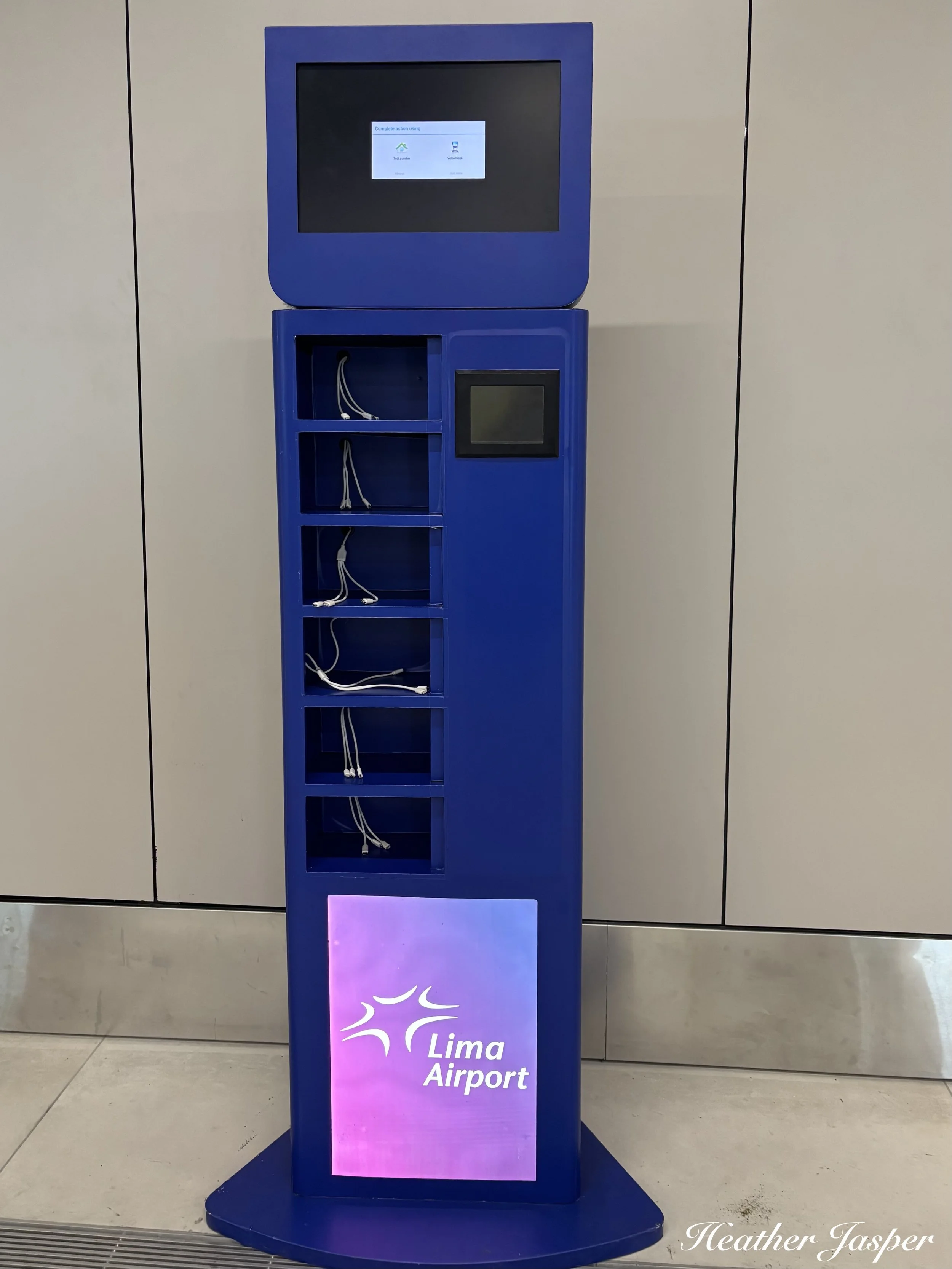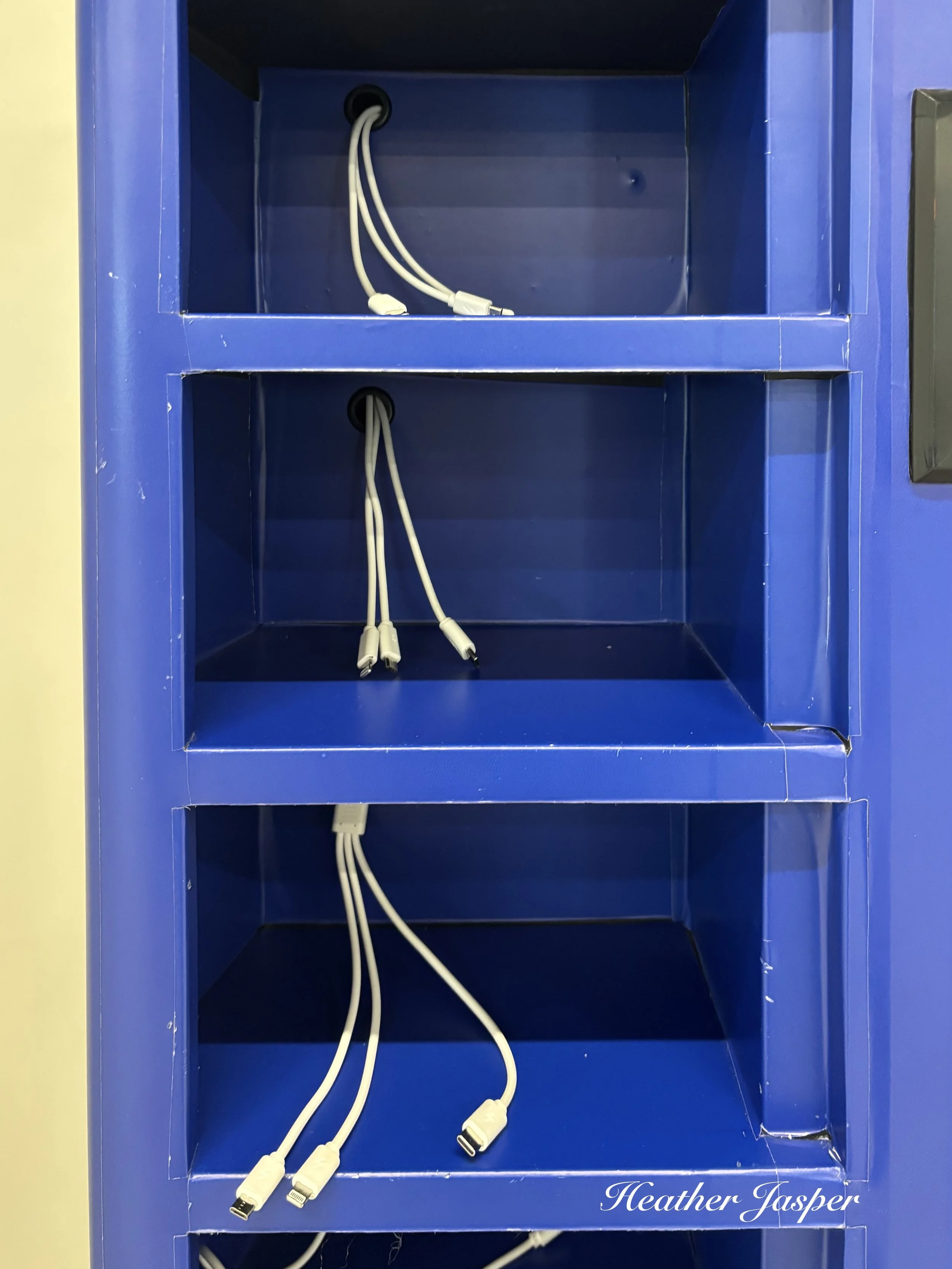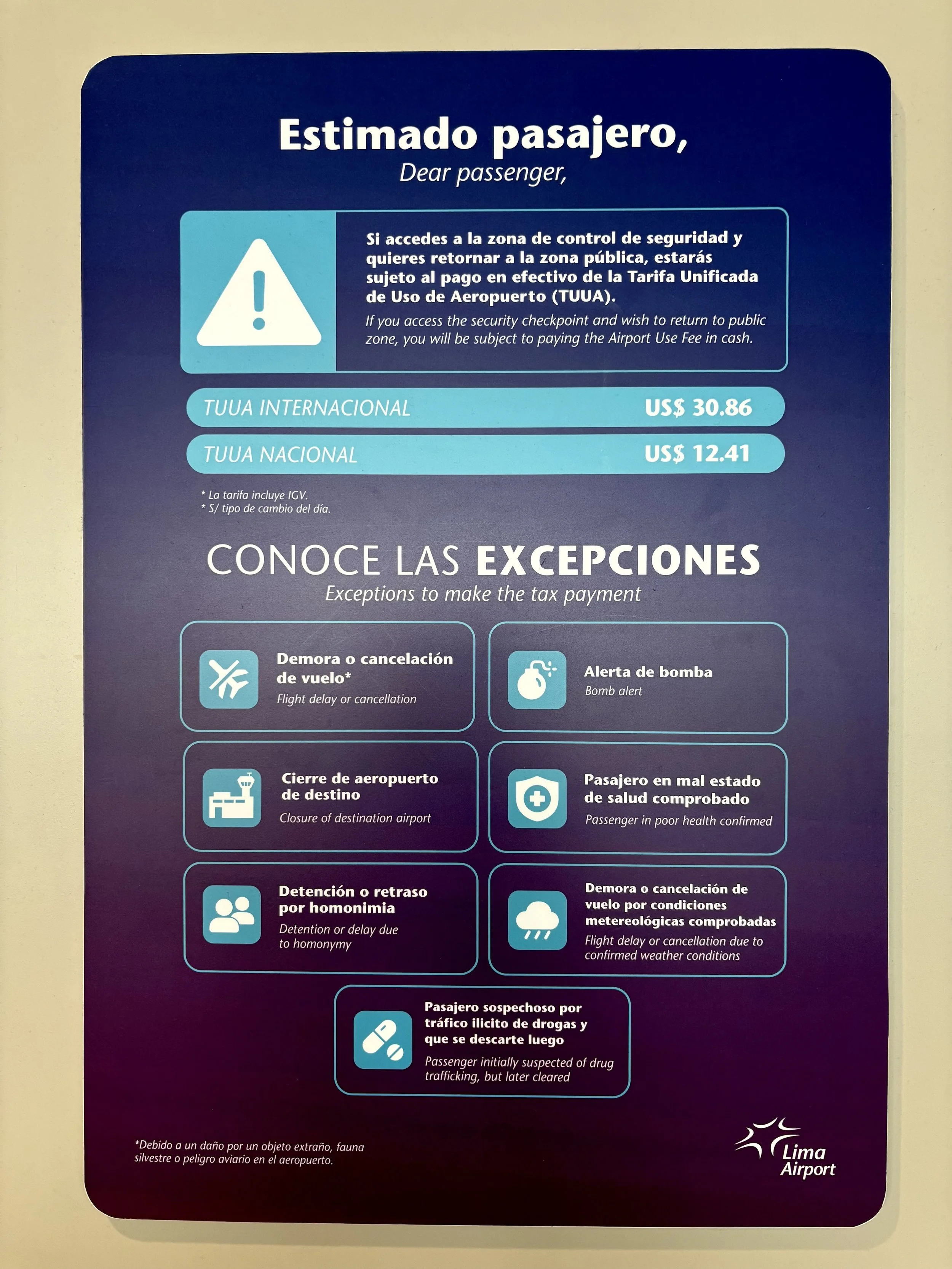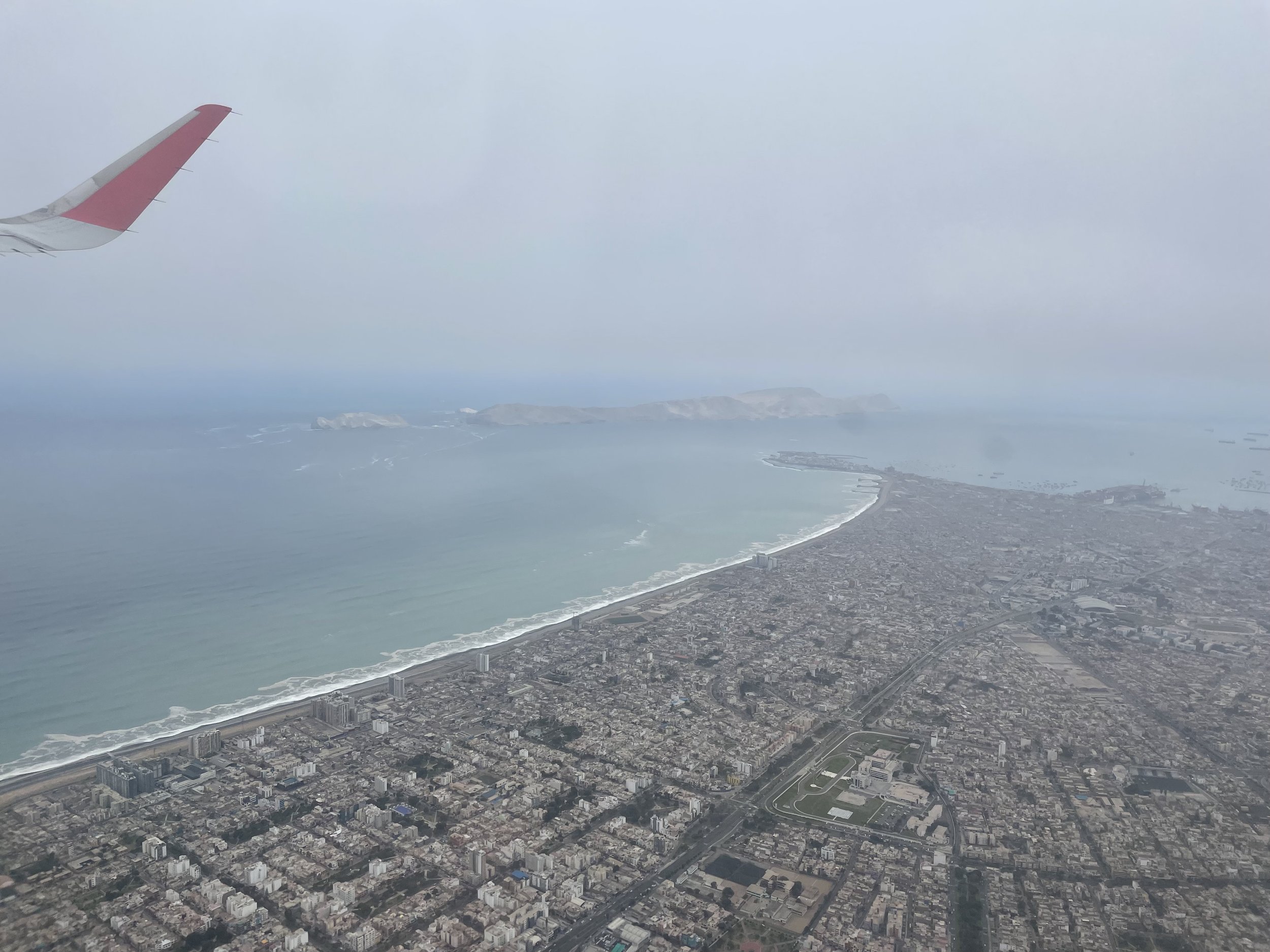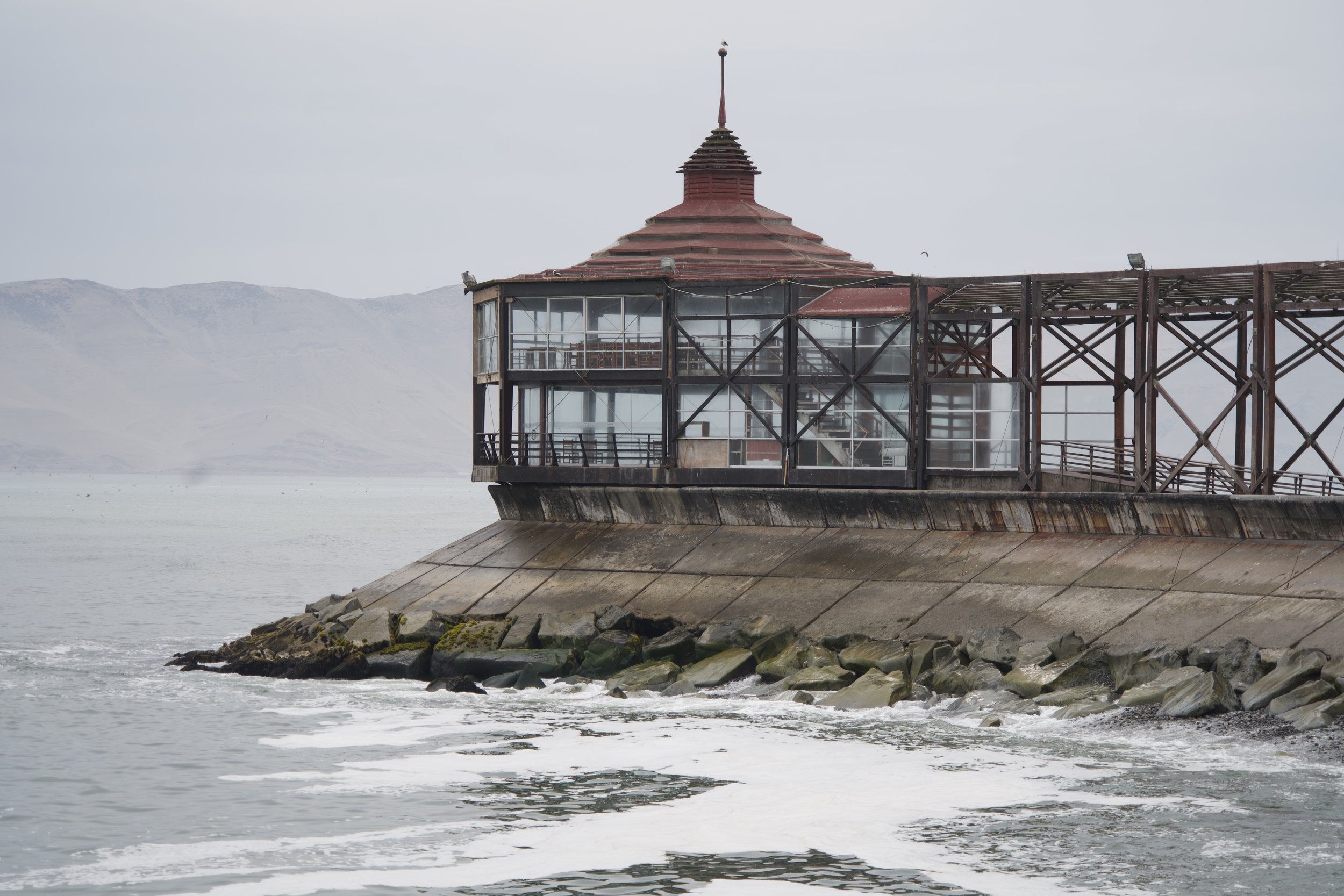Lima Airport Tips
Allin chaskinqan kay means welcome in Quechua, the native language of millions of Peruvians.
Here’s everything you need to know about Lima’s Jorge Chavez airport: step by step!
Questions about your trip? I offer personalized travel advice for Peru. Contact me to arrange a call!
Lima got a new airport June 1, 2025!
This is a completely new terminal, built across the runway from the old terminal. Information about the airport from before June 2025 is incorrect. Not all maps are updated: the new airport is on Morales Duárez Avenue in Callao (north of Lima).
On July 23 a friend departing Lima for a flight to Cusco had to wait 45 minutes to check her bag and another 45 minutes to get through security. You can probably get through the airport in 2 hours but traffic in Lima is unpredictable, so I’m going to agree with LATAM’s 3 hour recommendation for now.
I’ve been through the new airport 9 times so far. I’ll update this with more info on my first time departing from the new international terminal on November 19.
I put my name on my photos so you know they’re really from my experience in Lima. I’m not grabbing random airport photos off the internet (or worse, creating AI slop) and pretending that they’re the new Lima airport.
International Arrivals at Jorge Chavez Airport Lima, Peru
The photos above are from my arrival from an international flight. Be prepared for a long walk. (Click on the photos above to see them bigger).
Arriving on an international flight some airlines have counters where you can check information for connecting international flights. After those counters, people with connecting international flights follow the purple floor stripe and people staying in Peru follow the blue floor stripe that says Welcome to Peru: Immigration and Baggage Claim. Note that the sign on the ceiling just says Connecting Flights, as if that were for all connections. It’s only for international connections! Anybody staying in Peru must follow the signs for immigration.
Immigration wait times in Lima are particularly long 5am-8am and 6pm-11pm when there are usually a lot of international arrivals.
When you go down the escalators to Immigration you first pass a set of machines on the left, which are only for Peruvian citizens. The E-gates in the second photo are the electronic machines that Peruvians can use if they register their passport on the machines in the first photo on the left.
If you do not have a Peruvian passport, you don’t get to “Expedite your immigration process.”
I don’t get why the English translation “Expedite Your Immigration Process” is in giant capital letters and in tiny letters, only in Spanish, at the bottom it days *Peruanos y residentes mayores de 18 años. Peruvians and residents over 18.
Follow the signs for Extranjeros, which is for foreigners, even though it says Peruvians and foreigners. The signs for E-gates are not for boarding gates, they’re for electronic entry for Peruvians who used the machines. Unless you’re a diplomat or flight crew, you don’t get to use those lanes.
Next is baggage claim
If you don’t have any checked luggage, just follow the exit signs. Priority & business class passengers pick up their luggage next to the belts.
Arrivals in Lima
If you are staying in Lima, exit immigration at the arrivals hall. If you expect somebody to get you at the airport, look for a sign with your name here. Then you’ll see the exit to the parking garage. This is also where you can get a taxi, Uber, Cabify or shuttle.
My favorite Lima airport transportation is Airport Express.
This bus goes to four stops in Miraflores and is the safest & cheapest way to get from the airport into Lima. It’s outside Door 2 but also clearly visible if you exit out door 1 where all the taxi kiosks are.
Even if I’m not staying in Miraflores, I get the Airport Express bus to one of the four stops and then get an Uber to my destination. This isn’t sponsored. They don’t pay me to recommend the bus but I want people to know how I get to Lima. This is also the most sustainable & environmentally friendly way to get from the airport to Lima.
Click on the airport maps above to see them bigger.
Apologies I didn’t get a photo of Level 1 where the B gates are. I’ll get one in a couple weeks when I’m back at the airport. A, B & C gates are in the national airport. D gates are the international terminal but some C gates also have international departures.
Connecting Flights
If you are connecting to a flight in Peru (like Cusco) you have to go upstairs.
Follow the signs for Departures and Check-in. If you follow the signs, you’ll get to a stupidly steep walkway, which is fine if you don’t have much luggage. If you have a roller bag, take the elevator. I tried to take the walkway, thinking that it would work like an escalator but it’s way too steep. Roller bags just roll back down.
Never miss a blog: sign up for my newsletter!
Check-in for your next flight
Check the screens for where you can check in for your flight, which depends on which airline you’re flying with.
Check flight status
The screens with flight status (delayed, boarding, etc) are different from the ones that tell you where to check in for your flight. Both this screen and the one above are in the same area where you check in.
Priority lanes in Peru
In Peru priority and special assistance lanes are not only for people with physical disabilities. From airports to grocery stores, pregnant and elderly people can also use these lanes, Most are also for people with small children.
LATAM check in advice
Check in for all airlines is on level 3 and Latam has rows A and B. NOTE: lounges are currently unavailable. The new airport might be open, but it’s not really done.
If you somehow got to the airport without a ticket, a few airlines have ticket counters near the check-in counters. There is also a place to exchange money, which I don’t recommend because it has terrible rates. In general, exchanging money at the airport will get you the worst rate possible. Wait till you get to Cusco or wherever to exchange money.
Food at the Lima airport
There is a giant area of restaurants and two quasi-food trucks in the center of the hall for check in. Oddly, there is just one menu that has most of the things from each restaurant. I don’t recommend eating here because there are more options after security. However, it’s your only option if you’re at the airport too early to check in for your flight.
All the photos above are outside of security. Everything below is after security.
Security at Lima’s airport
International and national security is in the same place, but international departures have purple signs and national departures for flights in Peru have blue signs. The QR code for “expedite your immigration process” is only for Peruvians.
Going through security is EASY!
This is my favorite part of the new airport. With the new machines you don’t have to take anything out of your bags. Laptops, liquids, everything stays in. That doesn’t mean it’s always going to be fast, lines are still long, but it will be easy.
DO NOT take off your shoes or chug your water bottle.
Airports in Peru, even ones without these new fancy machines, do not require you to take off your shoes or empty your water bottle. Keep your shoes on and bring water with you to the airport. That’s the same in Lima, Cusco, Arequipa, everywhere in Peru. HOWEVER, if you have an international flight to the US, there is extra security at the gate. They will take away your bottle of water at the gate, right before you board your plane and you won’t have an opportunity to get more water.
Purple for international, blue for national
This is consistent throughout the airport. If you are departing on an international flight, always follow the purple signs and floor stripes. National flights in Peru are always blue signs and floor stripes.
After security, if you are taking a national flight you still go by a big shopping area. Next you’ll see floor stripes for departure gates for national flights. The A gates are around the food court and have turquoise floor stripes. Follow the darker blue for B and C gates.
The new flight status boards have one detail I really appreciate: walking times for each gate. On the light blue strip at the top there is a little icon of a person walking and below that is about how many minutes it will take you to get there from the board you’re standing by. And as long as you’re looking at the details, yes there really is a place in Peru named Pata de Gallo. It’s east of Trujillo and south of Cajamarca.
Lounges are still closed
The only lounge open so far is The Club LIM. It is only accessible from international departures. As of September 30, 2025 there were no lounges accessible from the domestic terminal. At the information desk, I was informed that they might open in December.
The food court has plenty of options but not enough seating. If the ones around the center are all full, look farther around the edges, where you’ll find TGI Friday’s and Starbucks.
There is only one bookshop after security and it has a very limited selection of books in English.
Limited seating
This is the center of the national airport, with restaurants around the outside and the A gates around the outside of the restaurants. I think both the seating and lighting are completely inadequate for a new airport.
Information desk
I only found one information desk, which is near the food court. The English words on the sign are awfully small for a desk simply labeled with the airport name. I hope they improve the signs for English speakers.
Ummmm
Of all the odd things they’ve put in the new airport, this one really has me stumped. I don’t get the frog or the lack of decent lighting or a bunch of other things.
Shopping past security
This is the only option if you need something practical. The other shops are souvenirs and food.
A Gates
If you are flying out of an A gate, look around the outside of the food court and follow the turquoise floor stripes. These gates do not have enough seating, so be prepared to stand or spend most of your time in the food court area.
C Gates
If you are flying out of C gates, be prepared for a bit of a walk. There are two very short moving walkways but most of it is just hallway.
Food options near gates
This is the only restaurant I found on the way to B and C gates. The A gates got most of the restaurants.
Seating at C gates
Each gate is closed off from the hallway and there is no seating in the hallway. There was at least a dozen people sitting on the floor and every seat full when I arrived. Gate C8 had it’s doors closed so I couldn’t sit there.
B Gates
The only way to get to B Gates is to walk the whole hallway to the end of the C Gates, then go downstairs. There is elevator and escalator for going downstairs, but no moving walkways past Gate C3. This is a very long walk and you should get a head start if you have a B Gate departure - but be aware that there’s no restaurants in B Gates. Get food at the restaurants around the A Gates before you start the trek.
B gates all have buses that take you out on the tarmac where you board your flight up a set of stairs. These are mostly national flights to destinations that don’t get much traffic, like Tacna or Cajamarca. They’re also commonly used by budget airlines like JetSmart and Star Peru.
If you have mobility challenges and can’t walk up stairs with your carry on, do not book flights with budget airlines in Peru. There is a high probability that your flights will be through B Gates, which are a royal pain for anybody who uses a wheelchair or has mobility challenges.
This would be my second favorite thing about the new Lima airport, except that there was nowhere to sit nearby. This was in the long C gate hallway without any seating.
One of my favorite airport murals: If you’re going to leave me, let it be at the airport.
You are allowed to bring a full water bottle through security for national flights. All other restrictions, like knives and fireworks, apply. You don’t have to take off your shoes at any airport in Peru.
Only go through security once
Don’t go through security until you have to, and make sure you didn’t forget anything at a restaurant outside security. Airport security fees are included in flight prices but if you leave security and want to go back through a second time they will charge you $12.41 for the national terminal and $30.86 for the international terminal.
There’s a weird asterisk by flight delay, which goes to very fine print at the bottom that basically says only if the delay is caused by a problem on the runway.
Short layovers in Lima
If you have a short layover from your international arrival and a connection to Cusco or another national destination, it’s best to stay in the airport. The neighborhood around the airport is one of the most dangerous in Lima (which makes it the most dangerous in all of Peru). There’s not a lot to see near the airport, so if you don’t have time to go somewhere, stay inside.
Long layovers at Jorge Chavez International Airport
The airport is in the town of Callao, which is just north of Lima but not technically Lima. It’s not a safe area. If you’re not checking your luggage, leave any big carryons in a locker at the airport, which are near the international terminal exit. Do not walk around Callao with your luggage!
Luggage storage
Look for signs for Left Luggage.
Luggage storage prices
It’s almost $2 USD per hour, but better than taking it with you if your next flight won’t let you check in yet.
If you just have a connection in Lima, try to get your bags checked through to your final destination.
I don’t recommend wandering around Callao. I’ve walked through the neighborhood near the airport, which is called Bocanegra, and it always makes my Spidey sense tingle. (Bocanegra means black mouth and the name always reminds me of a pit viper’s black tongue).
If you have four to five hours, you can consider taking a cab to La Punta, the only really touristy place in Callao. There’s a nice malecón and you can get in a good walk if you need to stretch your legs. La Punta also has a string of good restaurants along the malecón. If you want to go to a mall, the Plaza Norte Mall is a 30 minute drive away and a taxi costs about s/70 PEN. Keep taxi windows closed and put purses and valuables on the floor by your feet. One of the most common thefts in Lima is somebody reaching in a car window to grab stuff and then zooming away on a motorcycle.
Getting into the center of Lima takes about an hour most of the time but even longer during morning and evening rush hour. I don’t recommend going to Lima unless your layover is more than six hours. Give yourself two hours to get back to the airport during rush hour.
If you’re traveling to Peru, you need travel insurance!
I use Safety Wing and if you use my link, I may get a small commission at no extra cost to you.
Questions?
I offer personalized travel advice for Peru. Contact me to arrange a call.



